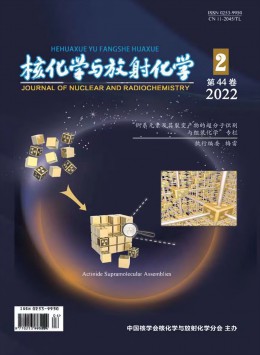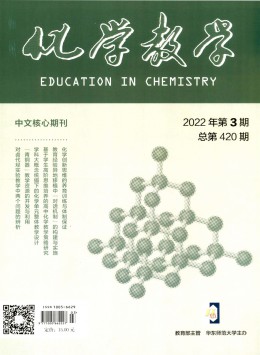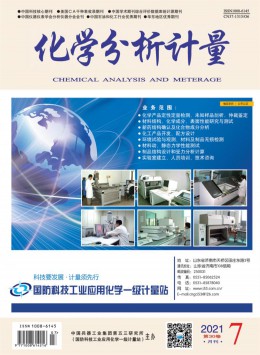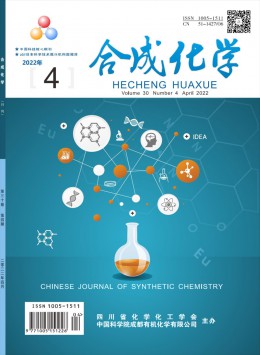化學滅活方法精選(九篇)
前言:一篇好文章的誕生,需要你不斷地搜集資料、整理思路,本站小編為你收集了豐富的化學滅活方法主題范文,僅供參考,歡迎閱讀并收藏。
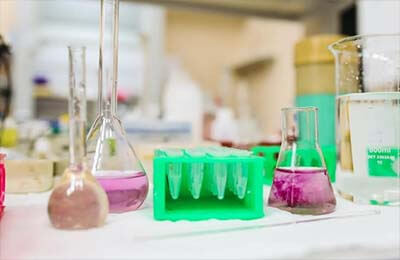
第1篇:化學滅活方法范文
【摘要】 本研究探測在亞甲藍(methylene blue,MB)光化學法處理單份血漿過程中,加入維生素C (vitamine C,Vit C)是否影響病毒的滅活效果,是否對血漿蛋白活性成分具有保護作用。用水泡性口炎病毒(vesicular stomatitis virus,VSV)作為指示病毒,在人血漿中加入不同濃度Vit C和終濃度為1 μmol/L的亞甲藍,應用40 000 lx 熒光強度照射并于不同時間取樣檢測。以細胞病變效應評價對VSV的滅活效果,用RT-PCR檢測病毒核酸的變化,并采用Clauss法﹑一期法和微量免疫電泳等方法對亞甲藍光化學法處理前后的血漿蛋白含量和活性進行分析。結果發現,VSV血漿在加入240 μmol/L Vit C并經MB-光照60分鐘后,病毒滴度下降﹥8 lgTCID50/ml; RT-PCR法也檢測不到病毒核酸;血漿中的纖維蛋白原和凝血因子Ⅷ的回收率分別為83.55%和81.67%,與不加Vit C進行亞甲藍光化學法處理結果相比有顯著提高(P<0.05);微量免疫電泳顯示,血漿中的大部分蛋白成分含量沒有明顯改變,免疫原性也未受到明顯影響。結論:血漿中加入一定量的Vit C不僅不影響亞甲藍光化學法對病毒的滅活效果,而且有效地保護了血漿蛋白活性成分,因此Vit C可作為亞甲藍光化學法處理血漿時的保護劑,能有效地提高單份新鮮冷凍血漿的質量。
【關鍵詞】 病毒滅活
Protective Effect of Vitamin C on Protien Activity in Plasma
during Virus Inactivation
Abstract To determine whether addition of vitamin C (Vit C) to single-unit plasma could influence the efficacy of inactivating viruses and could maintain the activity of plasma proteins by methylene blue (MB)-light treatment.Vesicular stomatitis virus (VSV) Indiana strain was used as the indicating virus.Human plasma containing VSV was added with different concentrations of Vit C and final concentration 1 μmol/L MB and irradiated by fluorescence at an intensity of 40 000 lx,samples were collected at different times for detection.Cytopathic effect was used to test the effect of virus inactivation.A segment of the nucleic acid encoding capsid protein of VSV was amplified with RT-PCR.Some methods,such as the Clauss method,the one-stage method,microimmunoelectrophoresis,were used to investigate the changes of plasma components.The results showed that when the VSV plasma was added with 240 μmol/L Vit C and treated by MB-light irradiation for 60 min,the titer of VSV decreased by more than 8 lg TICD50/ml.Meanwhile,target segment amplification of VSV was also negative.The recovery rates of fibrinogen and coagulation factor Ⅷ (FⅧ:C ) were 83.55% and 81.67% respectively,which had significant difference comparing with the routine MB-fluorescent light treatment. Most of plasma proteins were not affected significantly.No change in immunogenicity of these proteins was observed by using microimmunoelectrophoresis. It is concluded that virus inactivation is not influenced and plasma proteins are effectively protected by Vit C. Vit C can be used as a protector and is beneficial to improving the quality of plasma subjected to MB-photodynamic treatment.
Key words vitamin C; methylene blue-light treatment; virus inactivation; plasma protein
為預防輸注血漿引起的HBV﹑HCV和HIV等病毒感染,現已研究出多種血漿病毒滅活方法,如有機溶劑加表面活性劑法﹑β-丙內酯加紫外線滅活法等,雖然這些方法已較為成熟,但后處理復雜,必須通過昂貴的色譜柱除去血漿中殘留的有機物[1]。
到目前為止,對臨床單份新鮮冷凍血漿(fresh-frozen plasma,FFP)中病毒滅活的常用方法是亞甲藍光化學法[methylene blue(MB)-light treatment],它在歐洲國家中應用較為普遍[2]。該方法不但對經血液傳播的脂包膜病毒具有滅活作用,而且對一些非脂包膜病毒如猿猴病毒40(Simian virus 40,SV40)、腺病毒也有滅活作用[3]。Mohr等[4]通過PCR技術檢測到該方法對人類細小病毒B19的核酸也有損傷作用。
亞甲藍光化學法在對病毒滅活的同時,也會對血漿蛋白的活性成分造成損傷,從而影響血漿的臨床適用范圍及應用效果,尤其是血漿中的凝血類因子如纖維蛋白原(fibrinogen,Fg )和凝血因子Ⅷ (coagulation factorⅧ,FⅧ )損失很大,高達25%-35%[5,6]。如何在滅活病毒的同時提高血漿的質量呢?因此必須尋找一種既不影響病毒滅活,又能在一定程度上保護血漿蛋白活性成分的保護劑。由于MB在光照條件下產生自由基從而滅活病毒,同時,也損壞血漿蛋白。因此,利用生物抗氧化劑如維生素C(Vitamin C,Vit C)、α-生育酚、β-類胡蘿卜素、還原型谷胱甘肽等都可以清除體內產生的氧自由基,切斷過氧化鏈反應。王海華等[7] 發現,Vit C清除羥自由基(·OH)的能力最強。Jaakko等[8] 也認為,在MB光化學法中,部分凝血因子損傷與Vit C濃度成負相關。因此,本研究選擇在血漿中加入一定量的Vit C,觀察MB光化學法對血漿中VSV(vesicular stomatitis virus,VSA)病毒的滅活效果及對血漿蛋白活性成分的影響。VSA病毒是一種具有脂包膜的RNA病毒。
材料和方法
材料
單份新鮮冷凍人血漿 (成都生物制品研究所); 亞甲藍(Sigma公司產品);維生素C(Roche公司產品);RevertAidTM first strand cDNA Synthesis Kit(北京晶美生物工程有限公司產品);兔抗人血清(北京邦泰生物技術有限公司產品);電子式緊湊型熒光燈(中山市歐朗光國際照明有限公司產品);JD-3型數字式照度計(上海市嘉定學聯儀表廠產品)。
方法
VSV培養和病毒效價測定
VSV和非洲綠猴腎細胞 (Vero) 細胞均為本室保存的細胞。VSV用Vero細胞培養傳3代,收集培養上清液,用10倍連續稀釋法稀釋,加入培養有Vero細胞的96孔板中,每稀釋度分別接種4孔,5% CO2孵箱中培養3-4天,在倒置顯微鏡下觀察細胞病變 (cytopathic effect,CPE),按Karber法計算病毒滴度。當 VSV滴度﹥8 lgTCID50/ml,置-20℃短時保存備用。
MB光化學處理含Vit C的血漿
通過小量實驗(5.0 ml)觀察MB/光化學法滅活VSV的效果。單份冷凍人血漿在27℃下水浴融解,分裝至培養管,每管5.0 ml,加入0.5 ml VSV,再加入0、240、480 μmol/L Vit C和終濃度為1 μmol/L MB。在4-6℃條件下充分混勻1小時,在25℃條件下經40 000 lx熒光強度照射,分別在0﹑15﹑30﹑45﹑60分鐘取樣100 μl。用Karber法測定樣品中病毒滴度。將此實驗確定的最適Vit C濃度和最適光照時間用于后述研究。
RT-PCR分析病毒核酸
取MB光化學法處理的血漿100 μl,加入1 ml TRIZOL試劑,按常規方法提取血漿總RNA,用RT-PCR分析病毒核酸。RT反應按試劑盒說明操作,反轉錄出的cDNA直接用于PCR擴增。根據GenBank號為J02428的VSV-Indiana株全基因組資料,選擇其核衣殼基因為擴增靶序列,用Primer Primier 5軟件隨機設計若干對候選引物,再根據引物設計原則進行篩選比較,從中選出一對引物: P1 5’-ACG GCG TAC TTC CAG ATG G-3’;P2 5’-CTC GGT TCA AGA TCC AGG T-3’ 。由上海博亞生物技術有限公司合成。該對引物分別位于編碼VSV核衣殼蛋白基因的404-422位和802-820位,擴增出的目的片段長度為417 bp。PCR反應條件為:94℃變性45秒,55℃退火60秒,72℃延伸60秒,共31個循環。最后在72℃下延伸5分鐘。該實驗用正常血漿(FFB組)作為陰性對照,含VSV未行病毒滅活處理的血漿為陽性對照,實驗組是用MB光化學處理含240 μmol/L Vit C的VSV血漿(FFB+Vit C+MB組),分別于光照15、30、45和60分鐘取樣檢測。
血漿生化指標和生物學性質測定
用全自動生化分析儀測定不同處理組血漿中的總蛋白、白蛋白、葡萄糖、乳酸脫氫酶和膽固醇等生化指標;用Clauss法測定纖維蛋白原含量,用一期法測定凝血因子Ⅷ活性,每樣品平行測定3次。該實驗重復3次。以正常血漿為對照樣品。
血漿蛋白微量免疫電泳分析
用巴比妥緩沖液配制1% (g/ml) 瓊脂凝膠,均勻鋪板(10 cm×7.5 cm)。在距瓊脂板端2 cm處平均間距打直徑為3 mm的孔(共3孔)。并分別加入10 μl實驗樣品和對照樣品,以5 V/cm端電壓電泳2小時。然后在板中2孔之間打1個5 cm長、3 mm寬的槽,加入兔抗人血漿蛋白的血清,37℃過夜。并分別用生理鹽水和蒸餾水浸泡瓊脂板以洗脫過剩的和非特異蛋白,再用0.2%氨基黑染色10分鐘,7%乙酸脫色至背景無色。觀察抗原抗體沉淀帶,判斷血漿蛋白的聚散變化。
轉貼于
結果
滅活VSV的效果
加入240 μmol/L Vit C與未加Vit C對照組相比較,MB光化學法滅活病毒動力學曲線走勢基本一致,光照15分鐘內病毒滴度急劇下降,到60分鐘時,滴度為0,﹥8 lg TCID50/ml VSV被完全滅活。再將VSV盲傳培養3代,結果都未見細胞病變。但是在含480 μmol/L Vit C的血漿中,病毒滅活的效果顯著下降,處理15分鐘時,病毒滴度下降至4.5 lg TCID50/ml,之后處于1個平臺期,到60分鐘時,滴度仍 > 4 lg TCID50/ml(圖1)。因此,在血漿中加入240 μmol/L Vit C經MB光照60分鐘,能完全滅活VSV病毒。
光化學法處理對VSV核酸的影響
用RT-PCR檢測MB光化學法處理含Vit C血漿中的VSV衣殼蛋白基因,結果如圖2所示,陽性對照組在417 bp處出現明亮條帶,其片段大小與理論設計值相符(lane 1);正常陰性對照血漿(lane 6)不能擴增出該條帶,說明擴增是特異性的。光照15-45分鐘時,能擴增出417 bp(lanes 2-4)條帶,而且條帶亮度隨著時間的延長略有降低。只有照射到60分鐘時,擴增結果為陰性(lane 5)。
血漿生化指標和生物學性質改變
MB光化學法處理前后血漿的總蛋白、白蛋白、膽固醇、甘油三酯、尿素氮和肌酐等含量稍有減少,天冬氨酸轉氨酶、谷丙轉氨酶等酶活性也有不同程度下降,只有總膽紅素含量顯著降低了80%(表1未顯示全部指標)。從總的趨勢來看,FFP+MB+Vit C組受損傷程度一般都要小于FFP+MB組。從血漿的凝血因子活性檢測結果來看,FFP+MB組Fg和FⅧ:C的回收率分別為68.49%﹑71.07%,而FFP+MB+Vit C組達到83.55%﹑81.67%,用方差分析的方法統計二者差異有統計學意義。Table 1.Results of biochemical and biological tests of plasma (略)
血漿蛋白的抗原性和聚散程度
微量免疫電泳實驗結果表明,FFP+MB組和FFP+MB+Vit C組與FFP組比較,血漿中白蛋白﹑球蛋白α1區 ﹑α2區﹑β區和γ區抗原抗體形成的弧形沉淀線位置和形態基本相同(圖3),說明FFP+MB組和FFP+MB+Vit C組白蛋白和球蛋白分子的聚散程度和抗原活性都沒有明顯改變。
討 論
亞甲藍(MB)是吩噻嗪類化合物,在臨床上作為解毒藥用于治療氰化物與亞硝酸鹽引起的高鐵血紅蛋白血癥和抑郁癥。一次使用劑量為1-2 mg/kg[9]。MB光化學法中使用亞甲藍的劑量是1 μmol/L(320 μg/L),遠低于臨床解毒用量,在這一濃度作用下,如果處理后不去除染料的話,對人體而言也是不會有毒性問題的。MB也是多靶點的光致敏劑,它在光照下產生自由基如超氧陰離子(O-2 ·)﹑過氧化氫(H2O2)﹑羥自由基(·OH)和單線態氧(1O2) 等,這些活性氧的作用機制可能是使核酸鏈上的鳥嘌呤形成8-羥鳥嘌呤(8-oxoguanine),引起脫嘌呤和核酸鏈的斷裂,也可能在蛋白質之間,蛋白質和核酸之間形成共價交聯;而且還可能結合病毒的脂雙層,造成病毒膜結構的不可逆損傷[10,11],從而導致病毒的滅活。
Vit C作為自由基清除劑,是血漿中最主要的水溶性抗氧化分子,本身是人體每天所必需的。Vit C清除自由基的能力在光照射過程中隨自由基大量產生而得到發揮,故在光照前加入Vit C能更好地清除自由基,保護抗氧化酶的活性,使自由基與抗氧化系統達到一個新的平衡[12] 。本實驗在血漿中加入240 μmol/L Vit C時,不影響MB光化學法滅活病毒的效果,這可能是在此濃度下,Vit C對自由基的淬滅和MB光化學法使自由基的產生達到了較為理想的平衡狀態。而當加入480 μmol/L Vit C,滅活病毒的能力反而下降,這可能是太高劑量的Vit C能還原亞甲基藍,從而減弱光化學效應的強度;也可能是高劑量Vit C清除更多數量的1O2和一些自由基,從而影響了病毒滅活效果。
實驗中,我們也用RT-PCR法擴增VSV編碼核衣殼蛋白404-820位堿基,根據條帶有無及亮度差別,以推斷VSV的RNA含量。結果顯示,照射VSV血漿<45分鐘,RT-PCR能擴增出目的條帶,但是隨著時間延長,擴增產物減少。照射60分鐘時,擴增結果為陰性,完全不能檢出VSV的核衣殼基因。這一結果與細胞病變效應結果一致。這也說明了MB光化學法對VSV的RNA具有損傷作用,這種損傷作用隨著滅活時間的延長而加大。這也進一步提示了,VSV感染性的有無與核衣殼基因片段擴增產物檢出與否存在平行關系。通過CPE法、一期法、微量免疫電泳法等證實,加入240 μmol/L Vit C處理組與未加Vit C對照組相比較,MB光化學法滅活病毒的效果基本一致,但是前者對Fg和FⅧ:C的保護作用卻顯著加強,確實起到了保護血漿蛋白的作用。
目前,血漿是一種臨床需求量大且病毒感染危險性較高的一種制品,解決經輸注血漿而引起的傳染病是個棘手的問題。除了加強篩選獻血者外,對血漿進行病毒滅活處理是最有效的方法。將Vit C運用于MB光化學法中消毒單份人血漿,在有效滅活病毒的同時,還能保護血漿蛋白成份。但是,還需進一步闡明Vit C保護血漿蛋白成分的時限、機理,以便MB光化學滅活病毒法規模化應用于采供血行業中。
參考文獻
1Hornsey VS,Drummond O,Young D,et al.A potentially improved approach to methylene blue virus inactivation of plasma: the Maco Pharma Maco-Tronic system.Transfus Med,2001; 11: 31-36
2Mohr H,Knuver-Hopf J,Gravemann U,et al.West Nile virus in plasma is highly sensitive to methylene blue-light treatment.Transfusion,2004; 44: 886-890
3Wagner SJ.Virus inactivation in blood components by photoactive phenothiazine dyes.Transfus Med Rev,2002; 16: 61-66
4Mohr H,Bachmann B,Klein-Struckmeier A,et al.Virus inactivation of blood products by phenothiazine dyes and light.Photochem Photobiol,1997; 65: 441-445
5de-la-Rubia J,Arriaga F,Linares D,et al.Role of methylene blue-treated or fresh-frozen plasma in the response to plasma exchange in patients with thrombotic thrombocytopenic purpurn.Br J Haematol,2001; 114: 721-723
6Hornsey VS,Krailadsiri P,MacDonald S,et al.Coagulation factor content of cryoprecipitate prepared from methylene blue plus light virus-inactivated plasma.Br J Haematology,2000; 109: 665-670
7王海華,蔣明義,汪瓊等.幾種抗氧化劑對羥自由基的體外清除作用.湘潭師范學院學報(自然科學版),2002;24:87-90
8Parkkinen J,Vaaranen O,Vahtera E.Plasma ascorbate protects coagulation factors against photooxidation.Thromb Haemost,1996; 75: 292-297
9Simonsen AC,Sorensen H.Clinical tolerance of methylene blue virus-inactivated plasma.Vox Sang,1999; 77: 210-217
10Abe H,Wagner SJ. Analysis of viral DNA,protein and envelope damage after methylene blue,phthalocyanine derivative or merocyanine 540 photosensitization.Phototochem Photobiol,1995; 61: 402-409
11Schneider JE Jr,Tabatabaie T,Maidt L,et al.Potential mechanisms of photodynamic inactivation of virus by methylene blue I.RNA-protein crosslinks and other oxidative lesions in Q beta bacteriophage.Photochem Photobiol,1998; 67:350-357
第2篇:化學滅活方法范文
【摘要】 目的:探討不同消毒方式對口腔器械的消毒效果。方法:配制HBsAg懸液金黃色葡萄球菌液,將人工污染后的口腔器械完全浸入不同的消毒液中或放入高壓蒸汽滅菌器中進行消毒處理,進行無菌檢查。結果:高壓蒸汽滅菌器6min可使人工污染過的口腔器械全部達到滅菌,對HBsAg抗原性滅活達100%,高壓蒸汽滅菌器效果比化學消毒劑的消毒效果好。結論:高壓蒸汽滅菌器是口腔科消毒器械的最佳選擇。
【關鍵詞】 口腔器械;消毒;滅菌;效果評價
近年來患者在看牙時感染其他疾病的病例不斷增多,如何控制口腔治療中的交叉感染問題逐漸被人們重視。我院口腔科嚴格執行衛生部下發的《醫療機構口腔診療器械消毒技術規范》,對幾種不同的口腔器械作了臨床試驗篩選出最佳消毒方法,現將臨床資料分析如下。
1 材料與方法
1.1 材料 采用目前臨床中使用較多的高速手機、潔牙手柄、脫冠器、車針、探針、鑷子、擴大針口腔器械各20件作為試驗器械。以2%戊二醛液、氧化電位酸化水、健之素液(有效含氯為40%,其成分為三氯異尿酸及其分解物、抗干擾劑等)作為試驗用消毒劑,高壓蒸汽滅菌器作為消毒器械。
1.2 方法 (1)將純化20mg/mL HBsAg用含10%小牛血清PBS稀釋配制HBsAg懸液200μg/mL,取金黃色葡萄球菌用磷酸鹽緩沖液制備成含菌量為107~108cfu/mL的菌懸液。(2)吸取HBsAg懸液、葡萄菌懸液分別均勻涂布于經滅菌的手機、潔牙手柄、脫冠器、車針、探針、鑷子、擴大針器械前端5cm長范圍,1h后進行試驗。(3)將人工污染后的口腔器械完全浸入不同的消毒液中,浸泡30min后取出做無菌檢查;將人工污染后的口腔器械用雙層純棉布包好后放入高壓蒸汽滅菌器中進行消毒處理,對滅菌后的口腔器械進行無菌檢查。
2結果
2.1 不同消毒方式對HBsAg的滅活效果見表1。
表1 不同消毒方式對HBsAg的滅活效果(略)
2.2 不同滅菌方式對金黃色葡萄球菌的滅活效果見表2。
表2不同滅菌方式對金黃色葡萄球菌的滅活效果(略)
3 討論
通過人工污染口腔器械,觀察2%戊二醛液、氧化電位酸化水、健之素液、高壓蒸汽滅菌器對HBsAg、金黃色葡萄球菌的殺滅效果,試驗結果表明高壓蒸汽滅菌器對口腔器械上污染的HBsAg病毒的滅活效果好,能夠徹底滅活HBsAg,明顯優于化學消毒液。由于車針、探針、鑷子、擴大針結構簡單,被HBsAg污染的部位能夠充分暴露于消毒液中,滅菌效果比較好,達100%,而手機、脫冠器、潔牙手柄結構比較復雜,消毒液與其污染的細菌不能充分接觸,滅菌效果不夠好。高壓蒸汽滅菌器對器械上污染的金黃色葡萄球菌的殺滅效果也明顯優于化學消毒液,能夠達到100%。因車針、探針、鑷子、擴大針結構簡單,被細菌污染的部位能夠充分暴露于消毒液中,滅菌效果比較好達100%;而手機、脫冠器、潔牙手柄結構比較復雜,消毒液與其污染的細菌不能充分接觸,滅菌不徹底。戊二醛、氧化電位酸化水、健之素一般浸泡30min,均可達到消毒效果、徹底滅活HBsAg抗原性需要高壓蒸汽滅菌器135℃ 6min。
口腔器械在臨床使用過程中直接接觸患者的唾液、甚至血液,污染嚴重。若消毒不徹底可成為傳播疾病的重要途徑,選擇適當的消毒方法是減少感染的重要環節。戊二醛普遍被認為是一種高水平消毒和滅菌劑。特別是中性和堿性戊二醛,具有較好的滅菌和防腐性。在醫院內被廣泛應用,但因成本較高、滅菌時間長(需浸泡10h達到滅菌)且對皮膚黏膜有較強的刺激作用,浸泡后的醫療器械需用滅菌蒸留水充分沖洗后才能使用,所以不便于口腔科大量器械的反復使用。氧化電位酸化水長期使用無任何不良反應,無毒、不致癌對皮膚黏膜無刺激使用時非常安全。氧化電位酸化水在完成口腔器械滅菌功能后,同陽光、空氣有機物結合后逐漸還原為普通水無污染,能夠消毒一些結構簡單的口腔器械[1]。健之素其成分為三氯異尿酸及其分解物、抗干擾劑等,其可殺滅細菌繁殖體、細菌芽孢、乙型肝炎等病毒、真菌等微生物。將一粒健之素藥片溶于1L水中,用水溶液進行消毒即可。健之素適用于物體表面、環境空氣、不耐高溫的器械等消毒。高壓蒸汽滅菌器是現代口腔科消毒器械的常規設備,它具有操作簡單、效果可靠、穿透力強、不污染環境等優點,它可以殺滅一切微生物包括芽孢,特別適用于口腔科有齒槽、縫隙、軸節的器械消毒。這些器械經塑封消毒后既干燥又避免了在運送過程中的污染。高壓蒸汽滅菌器在目前口腔器械的滅菌中是切實可行的方法之一。口腔疾病診療中使用的器械易穿破入血,它的消毒質量對人體的健康至關重要,選擇最佳的消毒方法是口腔消毒隔離的關鍵課題,我們以自己的臨床實踐為口腔科的消毒方式提供了可靠的臨床依據。
第3篇:化學滅活方法范文
關鍵詞:針桿藻;NaClO;KMnO4;滅活;光合活性
中圖分類號:X524文獻標志碼:A文章編號:16744764(2015)03014209
Abstract:
The inactivation efficiencies of Synedra sp. by NaClO and KMnO4 oxidation were investigated. The results indicated that in the range of 0~5 mg/L in the neutral condition, the inactivation efficiencies increased with the increase of NaClO dosage and the optimun dosage was 3 mg/L. Meanwhile NaClO showed a better degradation ability in acidic condition. The degradation ability of KMnO4 was not significant, indicating that KMnO4 had no effect on inactivation. Chlorination was effective for Synedra sp. inactivation, and however led to cell disintegration and organic matter release, thus endangering the safety of drinking water.
Key words:Synedra sp.;NaClO;KMnO4;inactivation;photosynthetic activity
近年來,中國河流、湖泊富營養化情況嚴重,水華頻發。作為中國重點水域的三峽庫區,由于三峽工程的周期運行使得庫區的水文、水環境等較蓄水前發生了巨大的變化,庫區支流河道型的硅藻“水華”現象時有發生,嚴重影響了供水安全[13]。硅藻的控制已經成為一個亟待解決的熱點問題。與湖泊型水庫的典型的藍綠藻水華不同,三峽庫區多以硅藻水華為主,尤以硅藻屬的針桿藻水華最為嚴重,約占總數的85%。從藻類的生理結構而言,硅藻為真核藻類,其細胞、細胞壁結構(外層為二氧化硅,內層為果膠質,對不利環境具有一定的抵御能力)、光合作用系統構成上均與原核類的藍藻有著明顯的區別。而目前關于凈水廠滅藻技術的研究以藍綠藻為主[46],如化學藥劑法、紫外線法、超聲波法等,硅藻在滅活機制和效能上可能有別于藍藻,因此,抑制硅藻類的活性并減少其對供水安全的影響具有重要的研究價值。
在各種滅藻技術中,預氯化是應用最廣泛的方法,它能增強對藻類細胞的去除[7]。目前,對藍藻細胞的氯化效果已經有很好的研究[810]。高錳酸鉀預處理能有效控制不好的氣味和味道并抑制生物生長,它還能提高混凝效果并且控制消毒副產物的生成[1112],有學者對高錳酸鉀作為預處理藥劑對藻的去除進行研究也得到了較為不錯的結果[13]。有研究表明,NaClO、KMnO4會對藍藻的光合作用活性產生負面影響[14],導致藍藻細胞的死亡。在過去的研究中已經證實,脈沖調幅(PAM)熒光測定術能很好的檢測光合作用的PSII階段,表征藍藻細胞的光合作用活性[1516],可以用來解釋藻細胞失活的內在機制。目前的研究主要是針對藍藻,對硅藻的去除研究很少,鑒于常用化學藥劑對藍藻的去除效果好,本研究對比考察了NaClO、KMnO4在不同投加量和不同pH條件下對硅藻的滅活效果,旨在為硅藻滅活技術研究提供一定的參考。
1材料和方法
1.1試驗材料和試劑
硅藻屬針桿藻 (Synedra sp.,FACHB1296)購自中國科學院武漢水生生物研究所,采用AGP培養基[17] ,在恒溫光照培養箱中進行培養。恒溫光照培養箱運行參數:溫度為20.0±1.0 ℃;光照強度為2 500 Lx;光/暗周期為14 h∶10 h。實驗中所使用的針桿藻初始濃度約為25~35×106 cell/L。
試驗中采用的NaClO溶液(w%:36.5%)和高錳酸鉀均為分析純。
1.2試驗方法
試驗采用同一培養階段的針桿藻,在不同的pH及NaClO/ KMnO4投加量下,分別檢測了其光合作用活性的變化,進而表征氯化與KMnO4預氧化對針桿藻的滅活特性。大多數自然水體的pH在6.0~9.0之間,反應藻液的pH分別采用0.1 mol/L 的鹽酸和NaOH進行調節,研究在酸性、中性、堿性(pH分別為5、7、9)水體中NaClO和KMnO4對硅藻光合活性的影響。硅藻在溫度15~25 ℃時生長較佳[18],并且易在春季“爆發”[3],因此,調節試驗的反應溫度始終維持在20.0±1.0 ℃(DC0510智能恒溫槽,寧波新芝生物科技股份有限公司)。反應過程中,采用磁力攪拌器對藻液進行攪拌,確保其各部分均勻。在預先設定的時間點進行取樣 ,并在樣品中加入一定量0.1 mol/L Na2SO3溶液,用于終止氧化反應,隨即對樣品進行分析。
1.3分析方法
針桿藻的PSII系統的光量子產量Y(反映實際光合效率),葉綠素a及快速光響應曲線(rapid light curves,RLC)采用浮游植物分類熒光儀(PHYTOPAM,德國Walz公司)進行測定。快速光響應曲線的測量條件設定為:步長10 s,最大光照強度764 μmol?m-2?s-1。參數α、ETRmax由如下RLC 方程擬合得到[19],見式(1)。
ETR=ETRmax×
(1-α×PAR/ETRmax)×e-β×PAR/ETRmax(1)
式中:ETR為相對電子傳遞速率;ETRmax為最大相對電子傳遞速率,反映最大光合速率;PAR為光強,μmol/(m2?s);α為初始斜率,反映了光能的利用效率;試驗中主要通過Y、α、ETRmax、葉綠素a值來反應藻細胞的活性。pH 采用雷磁PHS3C型pH計測定。
NaClO的濃度采用哈希公司的余氯儀量進行檢定。
2結果和討論
2.1NaClO對針桿藻的滅活特性研究
2.1.1NaClO投加量對針桿藻滅活效果的影響
當NaClO投量分別為0.5、1.0、2.0、3.0、5.0 mg/L時,針桿藻光合作用活性隨時間的變化如圖1所示。從圖中可明顯看出,隨著NaClO投量(≤3 mg/L)的增加,各光合作用參數值的降解速率均隨之加快,而投量為5 mg/L對針桿藻光合作用活性的降解速率與3 mg/L的已無明顯差異。
如圖1(a)~(c)所示,當NaClO投量為2.0 mg/L時,反應2 min后針桿藻光能的利用效率緩妥畬笙嘍緣繾喲遞速率rETRmax兩個參數值均迅速降為0,且其降解主要發生在最初的1 min內;反應5 min后光量子產量Y值也下降至0,且其下降主要在最初的2 min內。這說明2.0 mg/L的NaClO能在短時間內迅速抑制針桿藻的光合系統,抑制可能從破壞PSII系統電子傳遞鏈開始。
如圖1(d)所示,在NaClO的投加量小于1 mg/L條件下,60 min反應時間內葉綠素a無明顯降解;當投量≥2.0 mg/L時,隨著投加量的增加,葉綠素a的降解速率逐漸增加,并且在0~10 min時間內,葉綠素a值降解最為顯著, 30 min以后趨于平緩;并且圖中可見當NaClO的投量為3.0和5.0 mg/L時,葉綠素a的降解效果已無明顯差異,增大投加量不能明顯提高其降解率。而郭建偉[20]的研究發現,當NaClO的投加量在3.75 mg/L時,銅綠微囊藻的葉綠素a在最初的1 min內降解效果最為顯著。在本次試驗中,當NaClO的投加量為3 mg/L時30 min后葉綠素a的降解率為86.6%,而在相同投加量下的NaClO對銅綠微囊藻的葉綠素a降解率在30 min時僅為21.79% [21],故NaClO對針桿藻的葉綠素a降解率雖然反應初期較為緩慢,但后期的降解效果明顯好于銅綠微囊藻。歐樺瑟等[6]提出了氯化滅活銅綠微囊藻過程的三個步驟的假說,即:氧化劑滲透內部降解細胞結構解體。由于硅藻的細胞壁由外層二氧化硅和內層果膠質組成,而藍藻的細胞壁則由外層纖維素和內層果膠質組成,因此,細胞壁組成及結構的差異導致NaClO能更快速地破壞并滲透進入銅綠微囊藻細胞,而與其胞內物質發生化學反應。另一方面,由于銅綠微囊藻屬原核生物,無核膜和葉綠體,其類囊體(膜上含有光合色素和電子傳遞鏈組分,為光合反應中心)分散在細胞質中;而針桿藻為真核生物,有核膜和葉綠體,其類囊體集中位于一個巨大軸生的葉綠體內。因此,類囊體的相對集中,使得相同的反應條件下NaClO對針桿藻中葉綠素a的破壞程度更大。
由圖1(a)和(b)比較看來,NaClO對Y、緩rETRmax值的降解主要發生在2 min內,而對葉綠素a 的降解主要發生在10 min內,葉綠素a的降解要明顯滯后。這可能是因為NaClO需要依次滲透進入硅藻細胞、葉綠體、類囊體才能與葉綠素a發生反應或是NaClO直接與細胞解體后釋放的葉綠素a發生反應。因此,對葉綠體的破壞要先于葉綠素a,而對葉綠體的破壞即可直接抑制針桿藻的光合系統。
但是,Ma等[7]試驗表明,氯化損壞銅綠微囊藻的細胞膜,并導致細胞內物質,如:毒素、K+, 葉綠素a的釋放。因此,NaClO滅活硅藻可能會造成細胞的解體,引起胞內有機物的釋放,危及飲用水安全。
2.1.2NaClO對針桿藻的降解動力學
由2.1.1節中可知,藻的光合活性Y值和葉綠素a值隨時間遞減,并且其降解趨勢呈現擬一級反應動力學的特征。
圖2和表1顯示,NaClO投加量對針桿藻的降解影響是比較大的。當NaClO投加量為0.5 mg/L時,Y值和葉綠素a值的降解速率常數k分別為0026和0.007 min-1,而投加量增加到3.0 mg/L時,k分別為0.967和0.167 min-1,影響非常大。
在逐漸減小,特別是當投加量為5.0 mg/L時,其對葉綠素a的降解速率幾乎與3.0 mg/L投加量的相同,說明降解的程度已經趨于飽和,因此從經濟性的角度考慮認為,NaClO降解針桿藻的最佳投加量為3.0 mg/L。
2.1.3NaClO在不同pH條件下對針桿藻滅活效果的影響
NaClO在不同pH條件下(pH=5、7、9)對針桿藻滅活效果的影響如圖4所示。針桿藻在不同pH條件下的滅活速率依次為:pH=5> pH=7 pH=9。這主要是因為20℃時,當pH=9.5時,在水溶液中NaClO以ClO-的形式存在;當pH=7.5時,以ClO-及HClO各占50%的形式存在,而當pH=5.0時,以HClO的形式存在。一方面,由于硅藻表面帶負電荷[23],因此,分子態的HClO更接近硅藻表面并滲透進入細胞。另一方面,HClO的氧化還原電位遠高于離子態的ClO-。因此,NaClO在酸性條件下更能發揮對硅藻的滅活作用。
2.2KMnO4對針桿藻的滅活研究
2.2.1KMnO4投加量對針桿藻滅活效果的影響
當KMnO4投量分別為0.5、1.0、1.5、2.0、3.0、5.0 mg/L時,針桿藻光合作用活性隨時間的變化如圖5所示。從圖5(a)~(c)中可明顯看出,KMnO4對光合作用參數光量子產量Y值和光能利用率恢稻無明顯降解效果;而最大光合速率rETRmax值的變化趨勢與NaClO降解過程中該值的變化一致,在最初2 min內電子傳遞速率迅速降低,說明KMnO4只抑制了電子的傳遞,減緩了針桿藻的光合系統PSII階段,但是并沒有從根本上對針桿藻的光合作用能力進行破壞。
如圖5(d)所示,在KMnO4幾種投量條件下,60 min反應時間內葉綠素a均無明顯降解,而KMnO4氧化是優先損壞藻細胞內的色素 [14],故可能是 KMnO4較難滲透進入針桿藻的葉綠體,因此不易實現對葉綠素a的降解,對光合系統抑制不明顯。并且當KMnO4的投加量≥1.5 mg/L時,水質呈紅色,經過1.5 h沒有褪色,可見較大的投加量會影響出水水質。因此,從整體上看,在pH=7時投加KMnO4對針桿藻的活性影響不大。
而Fan等[24]研究指出,高錳酸鉀能有效降解微囊藻,并且在1~3 mg/L范圍內能保持藻細胞結構完整[25],明顯優于對硅藻的滅活效果,可能是因為藍藻和硅藻的細胞壁組成與結構的差異。在本研究中明顯觀察到氯化對針桿藻的滅活效果要優于高錳酸鉀對其的氧化作用,Fan等[26]對藍藻的處理研究也報道了類似的意見。
2.2.2KMnO4在不同pH條件下對針桿藻滅活效果的影響
KMnO4在不同pH條件下(pH=5、7、9)對針桿藻滅活效果的影響如圖6所示。針桿藻在不同pH條件下的滅活速率依次為:pH=5> pH=7> pH=9。這主要是因為KMnO4在酸性和堿性條件下其反應式不同,在酸性條件下其標準氧化還原電位為E0=1.51 V,Mn能由+7價降低到+2價,而在中性和堿性條件下,其氧化還原電位低得多,分別只有E0=0.588 V和E0=0.564 V[27],Mn各自只能降低到+4和+6價,說明其氧化性的順序為酸性>>中性>堿性。
如圖6(ac)所示,即使是pH=5時,在60 min后,其Y值也只降低到了0.4,降解率僅為37.5%。并且如圖6(d)中所示,3種pH條件下葉綠素a在60 min內都沒有明顯的降解趨勢。因此,從整體上看,KMnO4對針桿藻沒有明顯的滅活效果。
3結論
1)NaClO對針桿藻的滅活效果顯著,其降解過程符合擬一級反應動力學,投加量為3 mg/L時就能達到很好的滅活效果。但是氯化會破壞細胞結構,使細胞分解,引起藻內有機物的釋放,在后續試驗研究中,可以探討胞內有機物釋放對飲用水安全的影響。
2)酸性條件下NaClO能更好的發揮其氧化降解的作用。
3)KMnO4在投加量≤5mg/L時對針桿藻的滅活效果不明顯;更高劑量下可能會對針桿藻的滅活效果更明顯,但是會影響出水水質。
4)酸性和堿性條件下KMnO4對針桿藻都沒有明顯的滅活效果。
參考文獻:
[1]
邱光勝,胡圣,葉丹,等.三峽庫區支流富營養化及水華現狀研究 [J].長江流域資源與環境, 2011, 20(3):311316.
Qiu G S,Hu S,Ye D,et al.Investigation on the present situation of eutrophication and water bloom in the branches of three gorges reservoir [J].Resources and Environment in the Yangtze Basin, 2011, 20(3):311316.(in Chinese)
[2] 吳光應,劉曉靄,萬丹,等.三峽庫區大寧河2010年春季水華特征 [J].中國環境監測, 2012, 28(3):4752.
Wu G Y,Liu X A,Wan D,et al.The characteristics of spring algae blooms in the DaNing River,three gorge reservoir,2010 [J].Environmental Monitoring in China, 2012, 28(3):4752.(in Chinese)
[3] 楊敏,畢永紅,胡建林,等.三峽水庫香溪河庫灣春季水華期間浮游植物晝夜垂直分布與遷移 [J].湖泊科學, 2011, 23(3):375382.
Yang M,Bi Y H,Hu J L,et al.Diel vertical migration and distribution of phytoplankton during spring blooms in Xiangxi Bay,three gorges reservoir [J].Journal of Lake Sciences, 2011, 23(3):375382.(in Chinese)
[4] Ahn C Y, Joung S H,Choi A,et al. Selective control of cyanobacteria in eutrophic pond by a combined device of ultrasonication and water pumps [J]. Environmental Technology, 2007, 28: 371379.
[5] Wu X G, Joyce E M, Mason T J. Evaluation of the mechanisms of the effect of ultrasound on microcystis aeruginosa at different ultrasonic frequencies [J]. Water Research, 2012, 46 (9): 28512858.
[6] Ou H, Gao N Y, Deng Y, et al. Mechanistic studies of microcystic aeruginosa inactivation and degradation by UVC irradiation and chlorination with polysynchronous analyses [J]. Desalination, 2011,272 (1/2/3): 107119.
[7] Ma M, Liu R P. Chlorination of microcystis aeruginosa suspension: Cell lysis, toxin release and degradation [J]. Journal of Hazardous Materials, 2012,217/218:279285.
[8]Daly R I, Ho L, Brookes J D, Effect of chlorination on Microcystis aeruginosa cell integrity and subsequent microcystin release and degradation[J]. Environmental. Science Technology. 2007, 41: 44474453.
[9] Lin T F, Chang D W, Lien S K,et al.Effect of chlorination on the cell integrity of two noxious cyanobacteria and their releases of odorants[J]. Journal of Water Supply Research and Technology. 2009, 58: 539551.
[10] Zamyadi A, Ho L,Newcombe G,et al.Prévost, Release and oxidation of cellbound saxitoxins duringchlorination of Anabaena circinalis cells[J]. Environment. Science Technology 2010, 44: 90559061.
[11] Chen J J,Yeh H H. The mechanisms of potassium permanganate on algae removal[J]. Water Research, 2005, 39: 44204428
[12] Tung S C,Lin T F,Liu C L,et al. The effect of oxidants on 2MIB concentration with the presence of cyanobacteria[J]. Water Science and Technology, 2004,49: 281288
[13] 許國仁, 李圭白. 高錳酸鉀復合藥劑強化過濾微污染水質的效能研究[J]. 環境科學學報, 2002, 22(5): 664670.
Xu G R,Li G B.Efficiency of enhanced filtration with composite potassium permanganate(CP) in polluted drinking water freatment [J].Acta Scientiae Circumstantiae, 2002, 22(5): 664670.(in Chinese)
[14] Ou H, Gao N Y, Wei C H, et al. Immediate and longterm impacts of potassium permanganate on photosynthetic activity, survival and microcystinLR release risk of Microcystis aeruginosa [J]. Journal of Hazardous Materials, 2012, 219220(15): 267275.
[15]Bailey S,Grossman A. Photoprotection in cyanobacteria: regulation of light harvesting Photochem. Photobiol., 2008, 84: 14101420
[16]Campbell D, Hurry V, Clarke A K,et al. Chlorophyll fluorescence analysis of cyanobacterial photosynthesis and acclimation[J]. Microbiology Molecular Biology Reviews, 1998,62: 667683
[17] 張鳳嶺,王翠婷.生物技術 [M].東北師范大學出版社, 1993:277278.
Zhang F L,Wang C T.Biotechnology [M].Journal of Northeast Normal University Press, 1993:277278.(in Chinese)
[18] 湖北省水生生物研究所藻類研究室藻類應用組.淡水硅藻的大量培養 [J].水生生物學集刊,1975,5(4):503511.
Section of Applied Phycology,Laboratory of Phycology,Institute of Hydrobiology,Hupei Province.Mass culture of freshwater diatoms [J].Acta Hydrobiologica Sinica, 1975,5(4):503511.(in Chinese)
[19] Ralph P J, Gademann R. Rapid light curves: a powerful tool to assess photosynthetic activity [J]. Aquatic Botany, 2005, 82:222237.
[20] 郭建偉.紫外線對水中銅綠微囊藻和藻毒素控制研究 [D]. 上海:同濟大學,2010.
Guo J W.Investigation on the removal of microcystis aeruginosa and microcystins from water by UV irradiation [D].Shanghai:Tongji University,2010.(in Chinese)
[21] 歐樺瑟.氯化和UVC 滅活銅綠微囊藻的機理 [J].華南理工大學報:自然科學版, 2011,39(6):100105.
Ou H S.Inactivation mechanism of microcystic aeruginosa by chlorination and UVC irradiation [J].Journal of South China University of Technology:Natural Science Edition, 2011,39(6):100105.(in Chinese)
[22] Robert E L.藻類學 [M].科學出版社, 2012.
Robert E L.Algology [M].Science Press,2012.(in Chinese)
[23] Bernhardt H, Clasen J. Flocculation of microorganisms [J]. Journal of Water Supply: Research and Technology Aqua, 1991,40:7687.
[24] Fan J J, Robert D. Impact of potassium permanganate on cyanobacterial cell integrity and toxin release and degradation [J]. Chemosphere, 2013, 92:529534.
[25] Chen J J, Yeh H H. The mechanisms of potassium permanganate on algae removal [J]. Water Research, 2005, 39:44204428.
[26] Daly R I, Ho L, Brookes J D. Effect of chlorination on Microcystis aeruginosa cell integrity and subsequent microcystin release and degradation [J]. Environmental Science & Technology, 2007,41: 44474453.
第4篇:化學滅活方法范文
【摘要】 針對18O同位素標記反應兩個重要影響因素——肽段分散度和胰酶滅活方法,進行了標記條件的改進和滅活方法的優化。在H218O中加入RapigestTM SF助溶劑并微波輔助加熱,使α-酪蛋白胰酶酶切肽段的標記效率得到明顯改進(18O/16O 峰面積比值>99%)。標記后,對胰酶進行還原烷基化化學修飾徹底滅活,使標記后的肽段穩定性顯著提高,放置6 d不發生回交反應。對標準蛋白質甲狀腺球蛋白酶切肽段混合物標記后的質譜實驗結果表明:優化的標記方法能快速穩定地標記蛋白質酶切多肽。
【關鍵詞】 18O同位素標記;多肽;蛋白質組
Abstract In order to optimize the18O labeling method,two key aspects,peptide dispersion and trypsin deactivation were discussed。The addition of RapigestTM SF in H218O and microwave heating enhanced labeling efficiency of α-casein digested peptides(18O/16O ratio >99%).Chemical modification with tris(2-carboxyethyl)phosphine(TCEP) and iodoacetamide(IAA) resulted in trypsin deactivated completely.No significant back-exchange from 18O to16O was observed after labeling in 6 days.The experiment result with peptide mixture from showed that the improved method could be effectively used to label protein and peptide.
Keywords 18O stable isotope labeling;Peptide;Proteome
1 引言
定量蛋白質組學通過批量觀察正常與疾病細胞或組織在蛋白質表達譜上的差異,從整體水平上規模化篩選和發掘與疾病相關的蛋白,為致病機理研究和臨床應用提供重要參考信息。18O同位素標記技術是定量蛋白質組的一種常用技術 [1~5]。蛋白質酶切后的肽段,在胰蛋白酶的催化下,C-末端的兩個16O原子被替換成18O原子,從而使質譜檢測產生4 Da的質量差異。通過比較標記肽段和未標記肽段的峰面積強度,得到一對蛋白樣本的相對定量關系。盡管該標記反應具有條件溫和,標記前后肽段的理化性質不發生改變,能和肽段的其它分離分析方法兼容等優點,但卻由于反應條件極難控制,反應后標記產物不穩定而影響其在實驗室的廣泛應用。
本研究基于18O同位素的標記原理,討論了肽段分散度和胰酶滅活兩個重要因素對標記的影響,并據此對方法進行了優化。相比文獻[6]采用的水浴孵育標記和沸水加熱滅活技術,本方法標記時間短,標記效率強,抑制回交反應。實驗結果顯示,即便對于復雜的多肽混合物體系,采用本方法也能獲得高效的標記結果(18O/16O峰面積比值>99%)。
2 實驗部分
2.1 儀器與試劑
4800基質輔助激光解吸電離飛行時間串聯質譜儀(MALDI-TOF-TOF MS,美國Applied Biosystems公司)。
α-氰基4-羥基肉桂酸(CHCA)、甲狀腺球蛋白、α-酪蛋白(美國Sigma公司);測序級胰蛋白酶(美國 Promega公司);97% H218O(上海化工研究所);三(2-甲酰乙基)膦鹽酸鹽(TCEP,Sigma公司);碘乙酰胺(IAA,美國New Jersey公司);乙腈(J.T.Bake公司);三氟乙酸(TFA,ACROS公司);RapigestTM SF(美國Waters公司)。其它試劑為國產分析純。
2.2 蛋白酶切
牛甲狀腺球蛋白和α-酪蛋白蛋白用20 mmol/L NH4HCO3溶解后,加入RapigestTM SF(終濃度 0.1%)和TCEP(終濃度 5 mmol/L),在56 ℃還原1 h,再加入IAA (終濃度25 mmol/L), 放置暗處還原1 h。加入胰酶-底物(1∶50,w/w)的Trypsin酶切過夜。
2.3 蛋白標記和胰酶的滅活
將酶切后的肽段溶液冷凍干燥后直接加入H218O重溶,混勻后放入微波中反應10 min。加入TCEP(終濃度100 mmol/L)滅活,37 ℃水浴孵育1 h后,微波反應10 min。再加入IAA(終濃度100 mmol/L),于暗處放置1 h。
2.4 質譜分析
基質采用CHCA。儀器控制軟件為4800 ExplorerTM software,數據處理軟件為GPS ExplorerTM software 2.0。一級質譜數據采集使用MS-1 kV反射模式,加速電壓20 kV,掃描范圍m/z 700~3500,激光能量4500,每張譜圖累加1500次。馬心肌紅蛋白胰酶酶切肽段作為標準物對儀器進行外標校正,校準至誤差≤0.1 Da,相對標準偏差≤10×10-6。
3 結果與討論
3.1 增強蛋白質酶切肽段的標記效率
蛋白質酶切肽段18O標記方法的原理是基于胰蛋白酶催化產生的兩次酶-肽段復合物水解反應。該反應是快速的動態可逆反應。因此,經常發生標記效率不完全和標記肽段發生回交的情況, 有效地控制標記和回交抑制這兩個環節是實驗成功的關鍵[7,8]。
本實驗通過改善肽段在反應體系中的分散程度和輔助加熱,增加反應效率來有效地提高標記效率。肽段在體系中的分散程度增高后,有利于肽段C端的完全暴露,增加與胰酶和H218O的接觸機會。因此,改善肽段分散程度,能推進標記向正反應方向進行。在實驗中,加入RapigestTM SF助溶劑,能增強蛋白質及多肽的溶解性,提高分散程度,有利于H218O進行C末端羧基的交換反應。在α-酪蛋白酶切肽段18O標記產物質譜分析結果中,因為加入RapigestTM SF助溶劑,m/z 1660,1267和2316的肽段的標記效率明顯提高(圖1A和圖1D)。而未加入助溶劑組的3個肽段則標記不完全,仍然存在大量未標記的16O肽段(圖1C)。
圖1 α-酪蛋白酶切肽段18O標記前后MALDI-TOF-TOF-MS質譜圖(略)
Fig.1 MALDI-TOF-TOF-MS spectrum of tryptic digested peptides of α-casein
A.未標記的α-casein酶切肽段質譜圖(Spectrum of unlabeled peptide mixture);B.m/z 1267,1660和2316的肽段標記前質譜圖(Spectrum of unlabeled peptides with m/z of 1267,1660 and 2316); C.m/z 1267,1660和2316的肽段未加RapigestTM SF,孵育過夜標記后的質譜圖(Spectrum of labeled peptides with m/z of 1267,1660 and 2316 without RapigestTM SF,at 37 ℃ for 24 h); D.m/z 1267,1660和2316的肽段加入RapigestTM SF,孵育過夜標記后的質譜圖(Spectrum of labeled peptides with m/z of 1267,1660 and 2316 with RapigestTM SF,at 37 ℃ for 24 h); E.質荷比為1267,1660和2316的肽段加入RapigestTM SF,微波加熱10 min標記的質譜圖(Spectrum of labeled peptides with m/z of 1267,1660 and 2316 with RapigestTM SF and Microwave heating for 10 min)。
常規方法中,18O標記需要在37 ℃水浴中孵育24 h,以達到充分反應的目的。但即便如此,溫和的反應條件和較長的反應時間也難以保證標記完全。蛋白質酶切加上標記所耗費的時間超過36 h,滯后了實驗的進程。并且由于長時間置于水浴環境,容易因為密封不嚴等情況引入H216O,從而導致標記不完全。本實驗采用微波加熱的方式,不僅隔絕了潮濕的環境,而且只需要10 min即可標記完全。質譜結果見圖1D和圖1E。與傳統的水浴加熱方法相比,由于微波使肽段的受熱更為快速和均勻,因此能在很短時間內達到理想的標記效果。
3.2 標記肽段回交的抑制
18O標記反應的另一個常見問題是標記肽段容易發生回交。由于該標記反應是一種可逆反應,因此如果將18O標記完全的肽段溶于H216O中,仍能使18O標記肽段回復到16O標記狀態。胰酶是造成回交的主要因素,目前文獻報道抑制回交的方法有酸中止法、超濾胰酶法和微波胰酶滅活法,都不能完全抑制胰酶的活性,置于H216O中仍能發生一定程度的回交[7]。本研究采用化學滅活法,通過高濃度的還原試劑和烷基化試劑,對溶液中殘留的胰酶徹底滅活。如圖2所示,胰酶滅活后,18O標記肽段在液相色譜流動相(2%乙腈-98%水-0.5%甲酸)中保存6 d仍沒有觀察到明顯的回交產物,穩定的標記肽段能在液相色譜中進行后續分離分析。
圖2 18O標記后的α-酪蛋白酶切肽段在2%乙腈-98%水-含0.5%甲酸溶液中穩定性考察(略)
Fig.2 Stability of labeled α-casein peptides in 2% ACN-98% water-0.5% formic acid(FA) solution
A. α-酪蛋白酶切肽段標記后MALDI-TOF-TOF質譜圖(MALDI-TOF-TOF-MS spectrum of labeled α-casein);α-casein酶切肽段m/z 1267,1660 和2316標記后的MALDI-TOF-TOF質譜圖(After labeling MALDI-TOF-TOF-MS spectrum of labeled α-casein peptides m/z 1267,1660 and 2316) : B.0 d;C.1 d;D.3 d;E.6 d。
3.3 復雜肽段混合物標記結果
牛甲狀腺蛋白分子量為660 kDa。酶切后MALDI-TOF-TOF質譜能檢測到其中24條肽段。將優化后的方法用于該蛋白質酶切肽段的標記,以考察方法在復雜肽段混合物中應用的有效性和耐受性。結果如圖3所示, 本方法對于復雜肽段混合物仍能產生令人滿意的標記效率。
圖3 牛甲狀腺球蛋白酶切肽段18O標記效率圖(標記效率計算用18O標記肽段的單同位素質譜峰面積與16O肽段的單同位素峰面積比值)(略)
Fig.3 Labeling efficiency of thyroglobin peptides with 18O(18O incorporation efficiency was calculated by 18O/16O ratio of the first isotopic peak area)
3.4 小結
18O標記反應是定量蛋白質組學中應用最為廣泛的同位素標記方法之一。但由于該反應是一種動態可逆反應,18O交換受到多種因素影響,標記效率和抑制回交一直是實驗過程中的棘手問題, 目前仍不能穩定地在多個實驗室廣泛應用[9,10]。本研究在標記和抑制回交兩個關鍵點上對18O標記方法進行了優化。通過增強肽段的分散度,改變輔助加熱方式,結合化學方法徹底滅活胰酶,阻斷回交反應的發生,減少了標記時間,標記效率顯著提高,增強了標記產物的耐用性,滿足差異蛋白質組分析的需要。
參考文獻
1 Ching S E,Paul D V,Stuart G D,Eric C R.Proteomics,2008,8(8): 1645~1660
2 Jin S W,Peter G,Nathan E,Catherine F.J. Proteome Res., 2007,6(12): 4601~4607
3 Catherine S L,Yu Q W,Richard B,William J G,Laurence H P.Mol.Cell Proteomics, 2007,6(6): 953~962
4 SUI Shao-Hui(隋少卉),WANG Jing-Lan(王京蘭),JIA Wei(賈 偉),LU Zhuang(盧 莊),LIU Jin-Feng(劉金鳳),SONG Li-Na(宋麗娜),CAI Yun(蔡 耘),QIAN Xiao-Hong(錢小紅).Chinese J.Anal.Chem.(分析化學),2008,36(8): 1017~1023
5 Manfred H,Hassan M,Christoph M,Xu D Y.J.Am.Soc.Mass Spectrom,2003,14(7): 704~718
6 QIAN Lin-Yi(錢林藝), YING Wan-Tao(應萬濤), LIU Xin(劉 新), LU Zhuang(盧 莊), CAI Yun(蔡 耘), HE Jian-Yong(何建勇), QIAN Xiao-Hong(錢小紅).Chinese J.Anal.Chem.(分析化學), 2007, 35(2): 161~165
7 Henricus F S,Robert V D H,Ubbo R T,Jan V D G.Rapid Commun Mass Spectrom, 2006,20(23): 3491~3497
8 Peggi M A,Ron O.Anal.Biochem., 2006,359(1): 26~34
第5篇:化學滅活方法范文
動物模型和人研究顯示,WCV口服或胃腸外免疫均具有免疫原性,也具有預防呼吸道、腸道和全身性細菌感染的效力。雖然僅百日咳WCV被普遍應用,但其他WCV也具有普遍應用的潛力。本文報道了WCV研制的進展,重點闡述了制備更優質菌苗制劑的可能性。
腸道菌苗
空腸彎曲菌
空腸彎曲菌是引起胃腸炎的主要原因,估計全世界每年發病4億多例。某些地區的罹患率高達2.5萬~4萬/10萬。這種病原菌感染的主要后遺癥是Guillain-Rarré綜合征。一種傳統的空腸彎曲菌菌苗已在動物中進行試驗,這種菌苗(福馬林和加熱共同滅活,3劑)通過口飼給予小鼠,每劑間隔2天,并以大腸桿菌不耐熱腸毒素(LT,25μg)為佐劑。免疫后4周在口服攻擊模型中評估各種劑量的含和不含佐劑菌苗(105、107或109個細菌)的效力。用活空腸彎曲菌(108個細菌,100×半數定居量)攻擊動物,并監測排菌情況。最大劑量菌苗和較小劑量含LT菌苗能預防定居,含或不含佐劑的菌苗均能預防細菌全身播散。兩種配方的菌苗接種小鼠后,均檢得空腸彎曲菌特異性血清IgA和IgG升高,但僅在含LT菌苗免疫小鼠中檢得腸道IgA。
這種菌苗還在恒河猴中進行試驗。猴子間隔14天接種2劑1010空腸彎曲菌菌苗加0.5~1000μgLT,未見不良反應。部分動物在6周時接受1劑加強免疫。不管菌苗(福馬林滅活)是否含LT,接種者對空腸彎曲菌的特異性T細胞應答均增強。由于初免程序后已獲得最大應答,因此無需加強免疫。免疫后7天,IgA分泌細胞在含LT菌苗接種動物中增多。
第2種空腸彎曲菌菌苗已產生,目前正在進行Ⅱ期攻擊研究評估。這種菌苗是利用能生產“抗原增強”菌苗的營養信號轉導(NST)技術制備的。制備菌苗所用的細菌是通過專門方法培養的,其對INT-407和Ca-Co-2人腸上皮細胞的粘附力和侵襲力均增強,并在福馬林滅活前與剛果紅的結合力提高。這些表型被認為是空腸彎曲菌和其他腸道病原菌毒力和相關抗原表達的重要標志。為了獲得這些特征,可將細菌置于含0.1%脫氧膽酸鈉的腦心浸液肉湯中,37℃、10%CO2條件下培養至穩定期。
用上述細菌制備的NST菌苗在動物中的免疫原性強于傳統方法制備的菌苗。NST菌苗免疫鼠腸道產生的抗原特異性IgA大于傳統菌苗免疫鼠。口服含LT nST菌苗的雪貂產生的血清IgG水平比含佐劑傳統菌苗免疫雪貂高15倍。用同源泉空腸彎曲菌口飼攻擊雪貂,17%的NST菌苗免疫動物發病,而接受傳統菌苗的動物的發病率達67%。
產腸毒素性大腸桿菌
產腸毒素性大腸桿菌(ETEC)是造成兒童嚴重脫水性腹瀉的最主要細菌,估計每年發病4億例,死亡70萬例。ETEC是造成旅游者腹瀉的主要原因,僅美國就影響800萬人。表達定居因子CFA/Ⅰ和CFA/Ⅱ的ETEC經福馬林滅活制成的菌苗已在人中進行評估。間隔2周口服3劑含或不含霍亂毒素B亞單位(CTB)的菌苗(1011個細菌/劑,5個菌毛型),免疫后7天檢測外周血抗體分泌細胞(ASC)。對CFA/ cFA/Ⅰ和CFA/Ⅱ抗原產生應答的細胞主要是產生IgA的ASC,其次是IgM-ASC,IgG-ASC極少。2劑后的免疫應答最強。CTB不能增強對CFA/Ⅰ和CFA/Ⅱ抗原的應答。檢得對CTB產生應答的IgA-ASC,IgG-ASC,未檢得IgM-ASC,盡管對CFA的局部IgA應答極少與血清抗體水平的升高有關。在埃及進行的ETEC/重組CTB菌苗的研究中,74名21~45歲成人間隔2周接受2劑菌苗或安慰劑。受試者對CTB、CFA/Ⅰ、CS4、CS2和CS1的外周血IgA b細胞應答率顯著高于對照者。對滅活WCV產生強免疫應答的發現是重要的,因為口服純化的定居因子誘發的免疫應答微弱,且無保護作用。對菌苗的特異性T細胞應答也進行了評估。從接種者分離的人外周血單個核細胞中觀察到中等度的CFA依賴性體 外增殖應答,用定居因子體外刺激應答細胞可產生高水平的γ干擾素(IFN-γ),未檢得白細胞介素2(IL-2)。應答細胞主要是CD4+T細胞,CD8+細胞較少。高水平IFN-γ的產生可能具有免疫學意義。IFN-γ能刺激B細胞分泌抗體,增加腸細胞分泌組分的表達。這種類型的應答除產生IgA分泌細胞外,還能介導對ETEC攻擊的防御作用。
受試者還接種了由大腸菌素E2處理滅活的ETEC菌苗。這種滅活方法能殺死菌苗,且不為化學或加熱處理所改變。間隔1個月口服2劑此菌苗(3×1010個細菌)能在77%的接種者中誘導腸道抗CFA/ⅠIgA應答,86%的接種者產生增強的抗LT igA應答。接種者均能抵御同源和異源菌的攻擊。
李斯德菌
單核細胞增多性李斯德桿菌是一種食物傳播的病原體,人群罹患率較低,但在易感人群中的死亡率很高。最常影響的人群是孕婦或其他免疫損害者。
加熱滅活的菌苗已在小鼠中進行評估。觀察到的保護性免疫應答的標志是誘導細胞毒性T細胞和IFN-γ。在具有或缺少CD4+細胞的動物中均可誘導免疫應答,通過有免疫力動物CD8+細胞的導入可把免疫力移至無免疫力動物。菌苗是用在胰酷胨豆胨培養液中培養過夜、經70℃、60分鐘加熱滅活的細菌制備的。
沙門菌
在空腸彎曲菌檢測前,沙門菌是美國引起胃腸炎的主要細菌,腸炎沙門菌仍是重要的病因。傷寒桿菌是傷寒的主要病因,全世界每年發病3000萬例,死亡50多萬例。加熱滅活的鼠傷寒桿菌菌苗已在小鼠中進行試驗,細菌在盧氏肉湯中培養至對數生長期,用沸水浴加熱45分鐘進行滅活。菌苗可經腹腔(ip)或皮內(id)途徑給予。ip接種鼠的淋巴細胞增殖應答強于id接種鼠,但在免疫后42天降至相同水平。ip接種鼠脾細胞產生的IL-4和IL-2水平亦較高。此外,T細胞免疫印跡檢測顯示,ip接種動物能對不同分子大小的抗原產生應答,而id接種鼠主要對<18kDa的抗原產生應答。
福馬林、酚、丙酮滅活的鼠傷寒桿菌菌苗也在小鼠、大鼠和小牛中進行試驗,小鼠免疫丙酮滅活的WCV產生抗脂多糖(LPS)和全菌體(WC)抗體。小鼠免疫野型光滑株或粗糙突變株(不能產生O抗原)制備的菌苗所獲得的保護作用無差異。抵御致死攻擊的短期保護作用與WC凝集滴度密切相關,而長期保護作用與之無關。大鼠免疫福馬林滅活的菌苗能產生抗鼠傷寒桿菌抗體,且能抵御低水平的攻擊,但無胸腺大鼠卻不能,且能抵御低水平的攻擊,但無胸腺大鼠卻不能。用免疫動物的血清被動免疫無胸腺大鼠無效,而將免疫動物的脾細胞移給無胸腺大鼠則產生保護作用。這些研究提示,對菌苗的細胞介導免疫應答在抵御攻擊時起重要作用。
志賀菌
志賀菌引起的痢疾在全世界均有發生,估計每年發病2.5億例,死亡65萬例。幾項早期研究報道,一種滅活WCV能預防志賀菌病。有關這些菌苗組分的資料極少,但需口服大劑量才能奏 效。其他途徑免疫有反應原性,且保護作用極小。在痢疾爆發地區給予人群口服免疫,并在這些現聲研究中比較免疫人群與未免疫人群的罹患率。雖然這些研究沒有很好的對照組,但顯然菌苗有一定的保護作用。菌苗效力不佳部分由于這些口服WCV中并不存在高水平的相關抗原和難以刺激對死菌的口服免疫應答。
目前已制成NST福氏志賀菌菌苗,并在小鼠鼻攻擊模型中進行試驗。與制備傳統菌苗的細菌相比,制備種菌苗的NST細菌具有對人腸道細胞更強烈的粘附和侵襲力,能產生較高水平的毒力相關蛋白,且與剛果紅的結合水平提高。這種菌苗由福氏志賀菌2457T株構成,2457T株被培養于含0.1%脫氧膽酸鈉的腦心浸液肉湯中,于37℃培養至對數生長早期,然后經福馬林滅活。在凝集測定時,用NST培養的福氏志賀菌免疫家兔制備的兔超免疫抗血清能與同樣培養的宋內志賀菌發生交叉反應。在小鼠模型中含LT的NST菌苗與EcSf2a-2減毒活菌苗的效力相同,且比傳統方法制備的WCV更有效。
霍亂弧菌
霍亂是由霍亂弧菌引起的,主要特征是嚴重的脫水性腹瀉,估計每年發病700萬例,死亡10萬多例。
已在動物和人中對霍亂WCV進行了大量 的研究,用堆亂WCV+CTB胃腸外免疫小鼠能抵御霍亂毒素(CT,2.25~3LD50)的攻擊,這與免疫CVD103-Hg減毒活菌苗的結果相同:分別有100%和70%的小鼠能抵御2.25和3LD50的CT攻擊。小鼠口服CT能誘生產生IgA應答的外周血淋巴細胞(PBL)。胃腸外免疫2劑類毒素或滅活菌苗的家兔能抵御活菌的攻擊。胃腸外和口服途徑一同給予類毒素和WCV均有協同作用和保護作用。
接種者間隔2周口服3劑菌苗(含加熱滅活的稻葉型和小川型霍亂弧菌、福馬林滅活的稻葉型和小川型ElTor弧菌各2.5×1010,有時含CTB),菌苗可被很好耐受,無副作用報告。口服2劑菌苗能誘導相似的IgA和IgG抗毒素和殺弧菌抗體應答。
用1×106個霍亂弧菌攻擊,64%的WCV+CTB接種者獲得保護,56%的WCV接種者獲得保護,而對照組則90%發病。此外,發病的接種者的癥狀減輕。在孟加拉國的一項WCV現場研究中,2年內WCV的有效率為60%。在免疫成人中,3年中預防古典型霍亂的有效率為58%~76%,預防EITor型霍亂的有效率為48%~64%。菌苗在2~5歲兒童中的有效率為40%~56%,但預防ElTor型霍亂的效果較差。免疫接種后亦可觀察到死亡率降低。霍亂菌苗含有與其他致病性弧菌發生交叉反應的抗原,但接種霍亂菌苗不能預防非霍亂弧菌感染,盡管接種組的罹患率較低。在CTB+霍亂弧菌全菌體(WC-BS)菌苗的現場試驗中,免疫接種后能短期預防ETEC引起的腹瀉。接受WC-BS菌苗的旅游者亦能預防ETEC引起的腹瀉及ETEC與其他病原體的混合感染。
還對口服霍亂菌苗的免疫應答進行了評估。在瑞典志愿者中,在67%的口服單劑WC-BS菌苗者的腸灌洗液樣本中檢得升高的抗毒素IgA抗體,在93%的血清樣本和64%的唾液樣本中檢得升高的抗毒素抗體,接種者對菌苗的應答情況與恢復期病人相仿。在孟加拉國現場試驗期間,WCV和WCV+CTB接種者的殺弧菌抗體滴度升高1.3~2.1倍,免疫后7個月滴度有所回落,但保護作用可持續3年。接受1劑和3劑者的抗體滴度相近,但僅接受3劑者獲得保護。接受CTB+WCV接種者的抗毒素滴度升高2.5~4.5倍。在其他研究中,在接受WCV者中,71%的接種者的殺弧菌抗體、57%的接種者的抗LPS和外膜蛋白(OMP)抗體、43%的接種者的抗血凝素抗體滴度升高4倍以上。在接受WC-BS者中,89%的接種者的殺弧菌抗體、68%的接種者的抗LPS和OMP抗體、32%接種者的抗毒素滴度升高4倍以上。在5~64歲接種者中,WCV+CTB均能顯著提高IgG和IgA抗毒素和殺弧菌抗體滴度,而在4~12歲的接種者中僅抗毒素滴度升高。口服和胃腸外接種WC-BS菌苗均能誘生抗霍亂毒素的各類IgG和IgA1抗體,與恢復期病人產生的抗體相仿。反復免疫能誘生高水平的抗毒素IgG4抗體。免疫后檢測接種者的PBL顯示,口服免疫后的PBL主要產生IgA抗體,而胃腸外免疫后則主要產生IgG抗體應答,免疫后1年,接種者中存在產生抗毒素的PBL,且能產生以IgA和IgM同型為主的回憶應答。
霍亂弧菌滅活菌苗的制備方法可按NST空腸彎曲菌菌苗的制備方法加以改進。將霍亂弧菌569B株培養于含膽汁或脫氧膽酸鈉的 蛋白胨牛肉浸膏培養基中,于37℃培養至對數生長早期,即其對人腸道細胞的粘附水平較高時,提示粘附素產生增加。此外,應用能構建超表達重要毒力相關抗原的菌株來制備福馬林滅活的菌苗是極有希望的,在越南現場試驗期間,用表達毒素共調節菌毛的霍亂弧菌制備WCV顯示有效。
參考文獻
1 Pace JL et al.Vaccine,1998;16(16):1563-1574
第6篇:化學滅活方法范文
一、夏季動物免疫
1.免疫病種
有國家強制免疫的和江蘇省新增加的,如:豬瘟、高致病性豬藍耳病、口蹄疫、高致病性禽流感、新城疫、豬鏈球菌病、羊痘、狂犬病等。
2.免疫對象
指轄區內所有新補欄的或超過免疫保護期的健康畜禽。
3.免疫程序與方法
(1)高致病性禽流感a.對轄區內所有雞全部用重組禽流感H5N1亞型,Re-4株+Re-6株二價苗,胸部肌注。對首次免疫的種(蛋)雞3~4周后再進行一次加強免疫。b.肉雞7~14日齡時,用重組禽流感H5N1亞型,Re-4株+Re-6株二價苗免疫一次,每只0.3ml。c.對種(蛋)鴨、種(蛋)鵝,用H5N1亞型(Re-6株)禽流感滅活苗免疫。對新生雛鴨或雛鵝14~21日齡時初免,每只0.5ml,間隔3~4周,再進行一次加強免疫,每只1ml.d.肉鴨(鵝),7~10日齡用H5N1亞型(Re-6株)禽流感滅活苗進行免疫,肉鴨免疫一次即可,每只0.5ml,肉鵝須間隔3~4周,再進行一次加強免疫,每只1ml。e.對轄區內所有雞只全部集免疫,其它禽參照雞的免疫程序進行。
(2)牲畜口蹄疫:豬用O型口蹄疫滅活苗強制免疫,牛、羊用O型-亞洲I型口蹄疫二價苗強制免疫,對奶牛、種公牛還要使用A型口蹄疫疫苗強制免疫。a.豬用O型口蹄疫滅活苗,對新生仔豬以及雖已免疫但已過保護期(一般4個月左右)的豬進行免疫,新生仔豬一般在28~35日齡時首次免疫,每頭肌注1ml,間隔1個月后進行一次強化免疫。每頭肌注2ml。b.對新生羔羊、犢牛以及雖已免疫但已過保護期(一般4個月左右)的羊、牛,使用O型-亞洲I型口蹄疫二價滅活疫苗進行免疫,對新生羔羊在28~35日齡、新生犢牛在90日齡左右進行初免,每頭肌注1ml,間隔1個月后進行一次強化免疫,每頭肌注1ml。c.對奶牛、種用公牛,在使用O型-亞I型口蹄疫二價滅活疫苗免疫的基礎上,間隔1個月,還需用A型口蹄疫疫苗進行免疫,程序同O型-亞I型口蹄疫疫苗。d.對所有散養豬、牛、羊用相應疫苗進行一次免疫。
(3)豬瘟:對所有豬用豬瘟疫苗強制免疫。a.新生仔豬以及雖已免疫但已過免疫保護期的豬用豬瘟活疫苗免疫,對新生仔豬在25~35日齡時初免,每頭肌注1ml,60~70日齡加強免疫1次,每頭肌注1ml。b.所有散養豬進行1次免疫。
(4)高致病性豬藍耳病:商品豬、種母豬用高致病性豬藍耳病弱毒疫苗強制免疫,種公豬用藍耳病滅活苗強制免疫。a.新生仔豬斷奶前后使用弱毒苗初免,每頭肌注1ml,四個月后免疫一次,每頭肌注1ml。b.種母豬70日齡前免疫程序同商品豬,以后每次配種前使用弱毒苗加強免疫1次,每頭肌注1ml。c.種公豬使用滅活苗進行免疫,斷奶后初免,初免一個月后加強免疫一次,以后每間隔4~6個月免疫1次。每頭每次2ml.d.散養豬進行一次免疫。
(5)新城疫:對所有雞進行新城疫全面免疫。a.規模養殖場(戶)自行根據免疫程序、飼養周期開展相應免疫。b.所有散養雞用弱毒苗飲水免疫。
4.免疫接種不良反應的預防與處理
(1)不良反應的預防:a.免疫接種前對接種動物進行健康檢查;b.選正規廠家的疫苗(注射前對疫苗的質量,保質期進行檢查);c.氣候突變,暫緩接種;d.大群接種時應先從小群試驗;e.接種器械要清洗消毒,注射部位要準確,接種劑量要適當;f.接種后要就地觀察,防止出現應激或不良反應。
(2)不良反應的處理:a.對正常反應不予處理;b.對局部出現炎癥反應應消炎、消腫、止癢等;c.對血管、肌肉受損傷病例應采用理療、藥療和手術處理等方法;d.對嚴重反應的病例要進行抗休克、抗過敏、抗炎癥。抗感染、強心補液、鎮靜解痙等急救措施,同時弄清反應基本情況,如癥狀、病變、反應面、數量、反應率、死亡率疫苗種類、廠家、批號等并向上級報告,對合并癥病例用抗生素治療。
5.加強防疫監督檢查
實施強制免疫的豬牛羊使用主管部門統一采購的疫苗,免疫密度、耳標佩戴率、信息上傳率均達100%,建立免疫檔案,實施可追溯管理;對拒不實施強制免疫的畜主要進行查處;免疫效果監測實行送檢與隨機抽檢結合,及時查漏補缺,確保免疫效果。
二、夏季消毒滅源
1.消毒滅源的對象與方法
采用統一藥品、統一時間、統一指導,按規模場、散養戶不同飼養方式選擇不同的消毒方法(定期消毒與集中消毒相結合),對規模場、散養戶畜禽圈舍、用具、環境、定點屠宰場、農貿市場先清掃,沖洗再噴霧消毒;其方法有機械消毒、煮沸消毒、陽光、紫外線消毒、化學消毒(包括刷洗、浸泡、噴灑或噴霧、熏蒸)等。
2.消毒藥選擇與配制
根據消毒實際,嚴格按消毒對象、目的選擇消毒藥物,宜選廣譜、高效、低毒、價廉,易于操作的,如:生石灰、漂白粉、百毒殺、二氯異氰尿酸鈉、過氧乙酸等。根據不同的消毒對象,按消毒藥使用說明書配制不同濃度。
3.消毒注意事項
一是根據不同的消毒對象選擇合適的消毒方法和消毒劑,消毒劑必須符合國家標準,在有效期內,二是消毒藥與消毒對象有足夠的接觸時間,三是消毒場所要清掃沖洗,四是消毒液必須現配現用,五是選擇兩種或兩種以上的消毒藥交替使用。
三、小結
1.夏季免疫能提高動物免疫抗體水平,防止因高溫季節動物出現免疫空檔期。
2.夏季免疫是對春、秋防疫的有效銜接,使動物處于高免狀態,免遭外來疫病的侵襲。
第7篇:化學滅活方法范文
關鍵詞:生活飲用水;消毒技術;消毒副產物;聯合消毒;飲用水質量 文獻標識碼:A
中圖分類號:R123 文章編號:1009-2374(2016)26-0043-03 DOI:10.13535/ki.11-4406/n.2016.26.021
清潔飲用水是人類生活的一個根本要求,可是隨著人類人口不斷大量的增長,人類對水資源的需求量也開始不斷擴增,導致生活飲用水日益短缺這個問題漸漸變得十分嚴峻起來。采用安全、高效的飲用水消毒方法是維護人類健康的根本前提。未來生活飲用水消毒技術的發展既要保證對飲用水的消毒效果,也應該最大化減少化學藥劑的使用與投放,最大程度使得有害消毒副產物的產生得到減少。傳統的飲用水消毒是氯消毒,始于19世紀初。它可以十分有效地殺滅水體中病原微生物,能夠使人們感染傷寒、霍亂等水傳播疾病的概率最大程度降低。可是從20世紀70年代起,由于氯消毒過程中產生的三鹵甲烷(THMs)消毒副產物不斷被檢出,THMs有致癌作用,對人體的健康影響非常大,因此氯消毒的安全性受到了質疑。同時氯消毒對隱孢子蟲、賈第鞭毛蟲等病原體是低效甚至無效的,于是其他消毒技術開始逐漸得到了應用和發展,主要包括化學消毒法、物理消毒法以及聯合消毒法。
1 化學劑消毒法
1.1 ClO2消毒
由于ClO2具有很強的氧化性,所以它對微生物的細胞壁有著十分強的吸附和穿透能力,能夠非常有效地將細胞內含硫基的酶給氧化,十分迅速地控制微生物蛋白質的合成進而阻礙微生物的生長繁殖,從而完成消毒殺菌的目的。近些年來,研究發現ClO2不僅能殺滅水中病毒、鐵細菌、細菌、硫酸鹽還原菌、藻類、真菌及浮游生物甚至包括抗逆性最強的芽孢,而且對新國標中的“兩蟲”(隱孢子蟲和賈第鞭毛蟲)也可以達到滿意的滅活效果。自20世紀90年代以來,我國開始向美國自來水廠學習,在一些中小型自來水廠中應用ClO2來對飲用水進行滅菌殺毒處理。如果和氯消毒技術做比較的話,使用ClO2來消毒生活飲用水的時候,即使不太可能會產生鹵乙酸、三鹵甲烷等這種有強致癌作用的消毒副產物,但還是會生成氯酸鹽、亞氯酸鹽等這種無機的并且有毒有害的消毒副產物。另外,ClO2不宜在水中保存和運輸,一般采用現場制備的方式,對某些中小型水廠較為合適,但是對某些大型的水廠,因為人為投加ClO2的量很大,那么在現場制備ClO2的產量也隨之相應不斷增大,所以使用這種方式進行消毒就顯得非常不合適。總之,我們不斷地尋找ClO2既經濟且適用的制備方法,它已經成為了相關研究的熱點。
1.2 氯胺消毒
氯胺作為一種新型飲水消毒劑,其優點在于產生少量的三鹵甲烷以及能維持很長時間的消毒效果。由于單獨使用氯胺的消毒效果較差,往往采用聯合應用將氯胺作為末端消毒劑來使用到生活飲用水的殺毒滅菌中來。最主要的原因還是相對于飲用水中的游離的氯,氯胺在水體中呈現出更加良好的穩定性,可以在飲用水體中保存停留很長的一段時間,使得水體中能夠保持一定量的余氯,這樣能夠防止水體再次受到污染。由于氯胺在消毒飲水方面有很多可取之處,因此在我國不少水廠已經開始采用氯胺消毒工藝。
1.3 臭氧消毒
O3一直是屬于非常高效的消毒劑的范疇,對各種各樣的微生物都能夠十分有效地殺死滅活,O3氣體或者將它溶在水溶液中都會產生十分強大的殺滅許多微生物的作用,并且相對于有效氯而言,臭氧殺死多種微生物的速度要比其他消毒劑快且快數百倍。臭氧正是靠著它強大的氧化能力,不僅能夠殺滅生活飲用水體中絕大多數的細菌、病毒、包囊、芽孢,還能夠破壞大部分微生物內部的有機物,同時臭氧還可以起到去臭、脫色作用。臭氧的消毒效果比氯消毒好太多了,如果控制水溫越低,臭氧的消毒效果就會越來越好。
臭氧消毒的不足之處在于:第一,O3氣體的穩定性太差、水溶性十分小,對生活飲用水充分徹底地消毒后,無法在水體中保持余留量,并沒有持續的殺菌滅毒效果;第二,臭氧被用作在生活飲用水中的消毒劑,雖然在殺菌滅毒過程中不會生成氯化消毒副產物,但有很大的可能性它會在水體中生成溴酸鹽、醛類和過氧化物等一類具有高度潛在危險和毒性的副產物,其中溴酸鹽被國際癌癥研究機構定位2B級潛在致癌物。臭氧在殺滅生活飲用水菌體的過程中,影響它產生和生產溴酸鹽的因素復雜得簡直令人不可思議,它不僅受到生活飲用水體中溴化物含量的重大影響,還會受到O3氣體的濃度、接觸生活飲用水體的時間、生活飲用水體的ORP電位等很多因素的影響,因此必須有效地控制溴酸鹽的產生。
1.4 NaClO消毒
NaClO一般情況下是可以直接將其投加到生活飲用水中進行殺毒滅菌的,這樣做的目的是既可以避免Cl2投加到生活飲用水中所出現的審批問題,又可以避免投加二氧化氯到生活飲用水中時不可避免所帶來的消防安全問題,因此次氯酸鈉殺毒滅菌在某種程度上具有投加非常方便、審批非常簡單、較低的安全要求等許許多多的優點,從這方面看,次氯酸鈉相對其他消毒劑而言,算是很好的生活飲用水消毒替代方式。可是NaClO溶液也存在明顯的不穩定性,隨著放置空氣中時間的延長,其消毒效果會越來越差。為了盡量解決NaClO的不穩定、易降解的特點,建議在現場制備使用此種方式時解決此問題。同時,NaClO如果和液氯方式進行對比,由于次氯酸鈉的消毒滅菌原理與液氯殺毒滅菌原理基本相同,因此在某種意義上,次氯酸鈉殺毒滅菌也會存在對“兩蟲”(包括隱孢子蟲和賈第鞭毛蟲)等殺毒效果非常差勁以及會產生消毒副產物的問題,所以需要將其和其他消毒方法(紫外線等)進行聯合應用,以達到更好的消毒效果。
1.5 高鐵酸鹽消毒
高鐵酸鹽作為一種綠色、無機、多功能強氧化劑越來越受到國內外普遍關注。它具有氧化、吸附、絮凝、殺菌、消毒等多功能性質,操作方便且殺菌力強。高鐵酸鹽在氧化消毒過程中產生的還原產物Fe(OH)3不僅安全性較高,而且它作為助凝劑也是十分良好的。高鐵酸鹽在去除有害細菌和病毒的同時可有效去除水中的懸浮物及重金屬離子,因此高鐵酸鹽這種安全無任何毒副作用的多功能高效水處理藥劑,在飲用水殺菌消毒領域中具有重要的研究開發和應用前景。
2 物理消毒方法
2.1 紫外線(UV)消毒
將紫外線消毒應用于生活飲用水殺毒滅菌,具有消毒十分徹底、快速、便捷并且不會污染生活飲用水質的優點,最重要的是操作起來十分簡便、使用和維護的費用很低等。紫外線殺菌的原理是利用紫外線光量子的能量使與之接觸的微生物體的核酸結構受到破壞,微生物最終失去復制以及繁殖的能力。紫外線消毒是一種比較環保的技術,具有無需化學藥劑添加、無消毒副產物形成以及成本經濟等優點,在水質凈化領域中的使用方面是非常廣泛且普遍的。
雖然對絕大多數的病原體來說,紫外線的消毒滅菌的效果非常好,但是到現在為止,市場上普遍的紫外消毒滅菌的系統都是為燈管浸沒式,這種燈管存在下列非常普遍的問題:更換紫外燈管十分困難,石英的管壁需要經常的維護和清洗,紫外線利用的效率非常低,同時能耗很高,如果將紫外線直接浸沒在水中,紫外燈中的汞不僅對環境,而且對人體的健康都存在很大潛在的威脅,因此一種高效且非常可靠的光纖傳導紫外光消毒技術就出現在市場上。該技術的基本原理就是利用光學聚焦系統將光源產生的紫外光匯聚于一點,然后通過石英光纖再將其導入水中,并在光纖散光點處均勻地透射,從而滅活水中生存的微生物。
紫外線消毒滅菌的最大的缺點就是無法具有可持續性,不能絕對保證輸送和配送水管網內各類微生物的滅活穩定性,所以通常需要聯合常規消毒方式實現持續消毒效果。此外,生活飲用水體中的懸浮顆粒物、有機物COD及氨氮(NH3-N)都會在紫外線的傳播過程中帶來許許多多的干擾,進而十分影響消毒滅菌的效果,所以紫外線處理水要求水體具備很高的透明度。
2.2 超聲波消毒
超聲波輻射技術是一項非常好的水處理技術,它具有很好的發展前景,它在浮游生物的滅活、過濾膜及陶瓷濾芯的清洗等方面已有應用。從相關文獻得知,高頻率超聲的主要作用就是將水體中的菌膠團解聚,然而對于細菌的滅活的效用并不是太好,低頻率的超聲波才真正地具備有消毒滅菌的效果,可是如果只想單純地依靠超聲波消毒,我們又會面臨可能出現的能耗較高的問題。因此往往將超聲波與紫外線聯合應用進行消毒,這樣不僅比單純的超聲波或紫外線消毒工藝節約能耗,而且能產生很好消毒效果。
2.3 TiO2光催化消毒技術
TiO2光催化反應的基本原理就是利用具有強氧化性的活性自由基(羥基自由基)參與到生活飲用水體中的各種化學反應,由于羥基自由基具有很強的氧化性能,能夠將絕大多數水體中的有機物氧化分解并且最終將其礦化為水和二氧化碳等無機小分子。此外,TiO2光催化消毒技術具有很大的殺菌消毒的功效,TiO2作為催化劑本身不會溶解于水,沒有毒性,且不會對生活飲用水體產生污染,非常適用在飲用水方面進行消毒滅菌。近些年,正是由于TiO2光催化消毒技術在其性能上具有得天獨厚的優勢,其光催化殺毒滅菌機理及TiO2在生活飲用水消毒滅菌領域中的廣泛應用,所以TiO2光催化消毒技術逐漸成為各國科學家的研究熱點。
2.4 膜消毒
膜技術是20世紀60年代后迅速崛起的一門分離技術。它去除水中雜質的主要原理是機械篩分,膜技術應用于飲水消毒具有水質優良、操作簡單、占地小等優點,已成為人們提高水質的一項重要措施。在國外,膜技術用于飲用水消毒的研究十分多且復雜,用膜對病毒、致病細菌以及賈第蟲和隱孢子蟲這“兩蟲”消毒滅菌,能夠有很好的去除效果。
3 聯合消毒方式
3.1 “紫外線+氯(氯胺)”聯合消毒
在飲用水處理中,紫外線消毒對微生物滅活特性與氯(氯胺)消毒相比較是正好相反的。其中紫外線對原生動物和細菌的滅活效果最好,而氯消毒則是對大多數的病毒和細菌滅活效果最好,可是對“兩蟲”(賈第蟲和隱孢子蟲)效果較差。因此采用“液氯和紫外線(氯胺)”聯合的消毒滅菌技術,不僅可以滿足實現新國標里面對病原微生物指標控制的要求,還可以為生活飲用水提供很多級別的滅菌消毒的安全保障。
在實際工程中,由于紫外線對各類水體中微生物滅活效率很高,因此我們通常利用這一特點,在最開始的凈水工藝流程中,我們就是采用紫外線消毒滅菌來作為消毒的主工藝,必須充分保證對微生物的滅活效果,隨之僅使用少量余氯就可以非常有效抑制微生物的復活,不僅可有效減少后續氯的投加使用量,從而減少消毒副產物的產生,因此紫外線與氯(氯胺)消毒工藝相結合,將會對處理飲用水具有十分重要的現實意義。
3.2 紫外線+超聲波+氯(氯胺)聯合消毒
超聲波和紫外線聯合起來對水體進行消毒的效果在某種意義上肯定會優于這二者單獨作用于生活飲用水中的消毒效果,如果單獨采用超聲波進行預處理,我們可以將水中比較大粒徑的懸浮顆粒和菌膠團進行徹底擊碎、完全分散。我們在紫外線消毒的過程中,紫外線也將能夠更容易接觸到各類微生物及懸浮顆粒,從而可以不斷加強紫外線的殺菌滅菌的效果,提高紫外線的消毒效率。如果我們采用超聲波對水體進行一定程度上的預處理,我們只會需要很短的輻射時間就能把紫外線的消除效率進行顯著地提高,同時所用的能耗并沒有增加太多,因此我們將超聲波與紫外線進行聯合作用。這樣我們不僅能夠減少末端投加消毒劑(液氯或氯胺)所產生消毒副產物帶來的影響,同時一定程度上還可以抑制水體中微生物的復生現象,從而滿足新國標中對病原微生物指標嚴格控制的要求。這種殺菌消毒技術在國內某些企業中正在被研究應用,并且已經取得了初步的研究
成果。
除了以上消毒技術,還有高級氧化技術、水力空化、銀法+紫外、磁化法、靜電法、微電解法等新型消毒技術,這些新型消毒技術的研究大多只局限于理論研究階段,缺乏規模化的應用實驗研究。由于飲用水消毒關系到人們的健康,開發發展新的消毒技術還需要長期的應用研究。
4 展望
今天我們身處全世界在進行城市化這個龐大的背景之下,因為我們人類現在十分關注環境與安全方面所暴露出來的問題,當人們面臨用消毒劑處理飲用水問題時,人們不僅對化學消毒劑的安全使用提出了一定的要求,而且對政府監督也提出了更高的要求。由于當前我國飲用水的水源水質相對于國外的飲用水質來說,不僅更為復雜,而且處理起來更加困難,最重要的是和國情與發達國家相比,現在我國的經濟狀況和他們有著非常龐大的差距,這也導致我國在供水方面和排水等方面與發達國家的水平存在著相當大的差距。與此同時,國內目前還沒有研究出一種能夠完全滿足人們要求的消毒殺菌劑,我們只能按照消毒的對象和消毒目的來進一步確認選擇不僅經濟且適用的消毒劑。每一種消毒技術都存在優點和缺點,我們知道傳統的消毒工藝需要改進,那么生活飲用水聯合消毒的工藝就值得大量推廣和應用,如紫外線-氯(氯胺)消毒工藝等。在實際的生產生活中,應該花大力去開發新型的消毒技術以及物美價廉性價比更高的新型消毒劑,之后再結合我們國家的飲用水水源水質,還有最重要的經濟狀況也必須考慮其中,第一步就是將消毒工藝進行不斷地優化,在保證水的質量的前提下,我們應該盡量降低和減少最后一道消毒工藝的處理污染負荷,切實地縮小和降低運行成本,以便獲得最好的處理效果,這樣我們就能夠得到最優質的飲用水。
參考文獻
[1] 費春楠.飲水消毒技術的應用與發展[J].中國消毒學雜志,2014,31(6).
[2] 仝重臣,員建,苑宏英,等.飲用水處理中氯化消毒副產物三鹵甲烷和鹵代乙酸研究進展[J].凈水技術,2012,31(2).
[3] 趙建莉,王龍.飲用水消毒副產物的危害及去除途徑[J].水科學與工程技術,2008,(1).
[4] 趙玉麗,李杏放.飲用水消毒副產物:化學特征與毒性[J].環境化學,2011,30(1).
[5] Jin-long Z,Fu-yi C,et al.Removal effect on Mesocyclops Zeukarti and mutageni city with chlorine dioxide[J].Journal of Environmental Science,2006,18(5).
[6] 代園園,員建,苑宏英,等.二氧化氯作為消毒劑在飲用水處理中的應用[J].凈水技術,2011,30(1).
[7] 何文杰.安全飲用水保障技術[M].北京:中國建筑工業出版社,2006.
[8] 袁波祥,陳莎,楊圣杰,等.臭氧化技術在飲用水處理中的應用[J].北方交通大學學報,2001,25(6).
[9] YNGARD R,DAMRONGSIRI S,OSATHAPHAN K,et al.Ferrate(Ⅵ)oxidation of zinc-cyanide complex[J].Chemosphere,2007,(69).
[10] 周有福.紫外線消毒技術在家用凈水器中的應用[J].中國高新技術企業,2015,(16).
[11] 楊輝.飲用水紫外線消毒研究與應用進展[J].沈陽建筑工程學院學報(自然科學版),2002,(1).
[12] 陸鋼.光纖傳導紫外消毒工藝及其效能研究[D].哈爾濱工業大學,2011.
[13] 張光明,常愛敏,張盼月.超聲波水處理技術[M].北京:中國建筑工業出版社,2006.
[14] 羅凡,董濱,何群彪.飲用水消毒技術的應用及其研究進展[J].環境科學與技術,2010,33(12F).
[15] Mills A,Dabis R H,Worsely D,et al.Water purification by semiconductor photocatalysis[J].Chem Soc Review,1993,23(2).
[16] 李陽陽,高劍.膜技術在飲用水消毒中的應用[J].河南科技,2013,(5).
[17] 李崇善,郭明,馬成雄.我國生活飲用水衛生標準發展研究[J].甘肅科技,2012,28(21).
[18] Toben B,Uwe N.Improved wastewater disinfection by ultrasonic pre-treatment[J].Ultrasonics Sonochemistry,2004,(11).
第8篇:化學滅活方法范文
[關鍵詞]血液質量;安全隱患;防范
血液質量是血站系統的生命,是輸血事業永恒的主題。廣義上的質量除產品質量外還應包含過程質量、服務質量和工作質量。然而,輸血是一項包括產品質量及供、受血者安全與服務的復雜過程,它涉及從獻血者血管到受血者血管的所有環節,其中任何一環節發生質量差錯都將對病人造成嚴重甚至致命的后果。因此,必須將輸血風險最小化,主動防范和加強預防來全面提高質量意識。
1血液來源
血液制品是治病救人的特殊醫療用品,在其替代品尚未出現之前,血液唯一的來源是健康人體,健康的獻血者是保證臨床用血安全的首要環節。早在1997年世界衛生組織便推出了完全自愿性無償獻血的政策,中國在促進無償獻血方面取得了很大進展,據世界衛生組織最新數據顯示,從1998~2005年,我國完全自愿性無償獻血者的比例已從22%上升到94.5%。雖然完全自愿性無償獻血者通常不會隱瞞自己的病情和病史,有利于保障血液供應的安全,但實際工作中也不免出現一些漏洞,如冒名頂替、獻血間隔時間不夠或體檢不合格者再次獻血等,給輸血安全帶來隱患。計算機指紋識別系統將遏制不符合獻血要求者無償獻血,杜絕血液質量隱患,為確保血液安全提供了科學保障。
2血液制品
有文獻報道,獻血者中有15%的HCV可能處于窗口期而不易被發現[1],這是因為在病毒感染的初期,人體尚未產生相應抗體或相應抗體水平甚低(窗口期感染),以及受實驗方法、試劑的敏感性和準確性限制,人為差錯等方面的影響,使一些低水平的肝炎、HIV攜帶者或抗體效價低于檢測閾值的早期傳染病獻血者的血液難以檢出。目前,世界上任何先進的檢測設備和試劑,都不可能完全避免輸血傳播病毒的危險。
2.1白細胞濾除現代輸血學研究表明,輸血不良反應中有90%以上是與輸入異體血液的白細胞相關。白細胞導致的輸血反應主要有非溶血性發熱反應(FNHTR)、HLA同種免疫引起的血小板輸注無效、輸血相關移植物抗宿主病(TA-GVHD)等[2],同時,白細胞還是巨細胞病毒(MCV)、人類T淋巴細胞白血病病毒(HTLV-Ⅰ/Ⅱ)和人類免疫缺陷病毒(HIV)等嗜白細胞病毒的載體,因此,血液中非治療性成分―白細胞就成為一種“污染物質”,我們在儲存血液及血液成分前將白細胞濾除,將減少病毒經血液傳播的機會,使患者避免許多不良反應的發生,對輸血安全及臨床治療都具有十分重要的意義。
2.2病毒滅活血漿病毒滅活的方法有很多,其中亞甲藍+可見光照射(MB-P)破壞病毒核酸及病毒包膜法,達到了國際公認的血漿病毒滅活有效性指標,進行了病毒滅活的血漿總蛋白回收率平均達90%,各項凝血因子活性保有率均>70%,其中凝血因子Ⅷ平均保有率>70%。既保證了血漿蛋白的免疫原性,又減少了血源性疾病感染的機會,降低了輸血風險。
2.3射線輻照預防輸血后移植物抗宿主病的最有效地方法是血液輻照。γ射線輻照能有效地滅活血液中免疫活性淋巴細胞的增殖能力。實驗證明,白細胞濾除與γ射線輻照聯合應用是預防TA-GVHD最有效、可靠的方法。
美國、日本等許多發達國家,早在10年前就已應用白細胞濾除技術,目前已有95%以上的血液及血液制品進行濾白和輻照處理;病毒滅活血漿在歐共體國家也已廣泛得到應用。
3臨床用血
輸血實際上是一個組織移植過程,同種異體移植會產生一系列的免疫反應,臨床科學合理用血是保障血液安全的又一重要環節。現代輸血管理模式已由傳統的業務單一的血庫,轉變為輸血管理委員會指導和監督下開展多項診療業務的專業科室。
成分輸血是當前輸血技術發展的總趨勢,已作為衡量醫療技術水平和現代輸血醫學的標志之一。成分血是用物理或化學方法經提純得到的高純度、高效價、容量小的血液制品,由于全血成分復雜,目前尚不能既對全血做病毒滅活處理又保持其中各有效成分的功能,但對某些成分制品則完全能夠進行病毒滅活處理。采用成分輸血,可避免輸入不必要的血液成分所致的輸血反應,減少了感染病毒的機會,既節省了寶貴的血液又減輕了病人的經濟負擔。
加強臨床用血同血站備血之間的信息互通:質量管理體系是指把影響質量的技術、管理、人員、資源等諸多因素綜合在一起,相互配合而達成一個共同的目標。輸血質量管理體系在保證血液質量的同時也要向臨床用血管理方面延伸,否則從血管到血管的這一采供血過程將得不到全程監控,臨床和血站的相關工作人員之間缺乏互動溝通,血液質量信息得不到有效反饋,在很大程度上也就增加了臨床輸血風險。血液質量的要求不僅局限于血站工作的范圍內,還應配合醫院輸血科建立相應的臨床用血質量管理體系,如輸血科要收集臨床提供的輸血反應回報單,按月統報醫務科及當地血站,及時反映血液質量狀況,對出現嚴重輸血反應的,應馬上協助調查,是否由于特殊血型及抗體或其他輸血并發癥等原因所引起。醫院與血站進行良好的溝通,建立和諧、互動、雙贏關系,是現代輸血醫學的需求,有助于持續改進血液制品質量,為輸血醫學的發展提供可靠的臨床依據。
參考文獻:
第9篇:化學滅活方法范文
關鍵詞:臭氧;強氧化;消毒;水處理
1 臭氧的性質
臭氧是一種強氧化劑,氣態臭氧厚層帶藍色,有刺激性腥臭氣味,濃度高時與氯氣氣味相像;液態臭氧深藍色,固態臭氧紫黑色。另外,臭氧為純凈物。在常溫下,易分解,生成氧氣和氧原子,所以臭氧在工作中沒有二次污染產生,這是臭氧技術應用的最大優越性。在標準壓力和常溫下,它在水中的溶解度是氧氣的13倍,是空氣的25倍。與氧氣比,臭氧比重大、有味、有色、易溶于水、易分解。臭氧是已知最強的氧化劑之一,臭氧由于其在水中有較高的氧化還原電位僅次于氟。
2 臭氧消毒的機理
臭氧是僅次于氟的第二強氧化劑,菌過程屬生物化學氧化反應。臭氧消毒機理可分為兩類:
2.1 臭氧殺菌機理
以氧化作用破壞微生物膜的結構實現殺菌作用。臭氧首先作用于細胞膜,使膜構成成分受損傷導致新陳代謝障礙,臭氧繼續滲透穿透膜而破壞膜內蛋白質和脂多糖,改變細胞的通透性,導致細胞溶解、死亡。臭氧能氧化分解細菌內部葡萄糖所需的酶,使細菌滅活死亡。并且講死亡菌體內的遺傳基因,寄生菌種,寄生病毒粒子,噬菌體,支原體及熱原(內毒素)等溶解變性死亡,臭氧滅菌屬于溶菌劑,即可以達到徹底,永久的消滅物體內部所有微生物。
2.2 臭氧滅活病毒機理
以氧化作用直接破壞其核糖核酸RNA或脫氧核糖核酸DNA物質而完成的。
臭氧水滅菌情況有些不同,其氧化反應有兩種,微生物菌體既與溶解水中的臭氧直接反應,又與臭氧分解生成的羥基OH的間接反應,由于羥基OH為極具氧化性的氧化劑,因此臭氧水的殺菌速度極快。
3 臭氧消毒于水處理消毒優缺點
3.1 臭氧消毒滅菌的優點
臭氧滅菌屬溶菌級,殺菌徹底,無殘留,殺菌廣譜,可殺滅細菌繁殖體和芽孢、病毒、真菌,并可破壞肉毒桿菌毒素,且反應快,投量少;臭氧消毒的適應能力強,在pH為5.6-9.8、水溫0-37℃的范圍內消毒性能受影響很小;不產生持久性殘余,無二次污染;與氯消毒劑聯用可大幅度減少氯使用量。
由于氯消毒會產生具有致癌性的THMs(三鹵甲烷),臭氧消毒后補加少量氯消毒劑,可大幅減少THMs的產生;臭氧消毒后增加污水的絮凝沉降性能。而傳統的滅菌消毒方法,無論是紫外線,還是化學熏蒸法,都有不徹底、有死角、工作量大、有殘留污染或有異味等缺點,并有可能損害人體健康。如用紫外線消毒,在光線照射不到的地方沒有效果,有衰退、穿透力弱、使用壽命不長等缺點。化學熏蒸法也存在不足之處,如對抗藥性很強的細菌和病毒,則殺菌效果不明顯。
3.2 臭氧用于污水回用和飲用水消毒的缺點
臭氧不易溶于水,且不穩定;污水消毒時受水質的影響較大,所含有少量的有機物會增大臭氧消耗量,消毒成本增加;當臭氧接觸時間不足時,有機物不完全氧化產生醛、酮類等有毒有害物質。臭氧消毒作為氯消毒的替代方法,在飲用水處理中被越來越多地應用。
試驗表明,臭氧幾乎對所有細菌、病毒、真菌及原蟲、卵囊都具有明顯的滅活效果。但是臭氧氧化含有溴離子的原水時會產生溴酸根。溴酸根已被國際癌癥研究機構定為2B級潛在致癌物,WHO建議飲用水的最大溴酸根含量為25μg/L,美國環保局(USEPA)飲水標準中規定溴酸根的最高允許濃度為10μg/L。臭氧氧化過程中溴酸鹽的生成有臭氧氧化和臭氧/氫氧自由基氧化兩種途徑,控制溴酸鹽可以從控制其形成和生成后去除兩個方面進行。降低pH、添加氨氣、氯-氨工藝和優化臭氧化條件是控制溴酸鹽形成的方法,溴酸鹽生成后則可以利用物理、化學和生物方法去除。因此要實現臭氧、致病菌與溴酸鹽三者的平衡需進一步探討臭氧滅菌機理及溴酸鹽控制方法。
4 臭氧技術在水處理中的應用
臭氧作為強氧化劑用在凈水過程中的各階段,主要為預臭氧化、中間臭氧化和最終的消毒。預臭氧化可部分降解天然有機物和非活性微生物,以提高絮凝、沉淀等后續工藝去除濁度和除色、 去異味、去臭的效率;中間臭氧化主要為降解有機微污染物,去除三鹵甲烷前體物和提高可生物降解性能;而臭氧用于最終的消毒可去除凈水過程中的殘余微生物及減少消毒副產物的形成。
4.1 去除無機物
預臭氧化階段可去除原水中無機物質, 如鋅、鎳、銅、鉻、鎘五類重金屬物質和鐵、錳等,金屬離子可由于氧化作用形成難溶物而去除。同理,氨型氮可被臭氧緩慢氧化為硝酸根離子而通過后序的生物硝化去除。
4.2 氧化天然有機物
去除色度,臭氧對色基具有特別活性,能將其中的碳 -碳雙鍵破壞,產生相應的含氧有機化合物達到脫色的目的;去除異味、 臭味; 提高有機物的生物可降解性能臭氧可以將一些大分子難降解有機物氧化成易被細菌降解利用的小分子有機物,提高有機物的生物可降解性;減少 T OC 和 DOC;控制氯化消毒副產物,預加臭氧不會產生三鹵甲烷,并能有效去除原水中大量的三鹵甲烷前體物,使濾后水再經氯化(消毒)時生成三鹵甲烷的幾率大大減少。
4.3 消毒作用
臭氧具有很強的殺菌消毒能力,不易引起二次污染,作為飲用水的消毒殺菌劑在歐洲許多國家得到了廣泛的應用。臭氧的殺菌機理是臭氧對細菌直接作用,氧化分解葡萄糖氧化所必需的酶。
5 結語
消毒劑的選擇一直是廣大水處理工作者討論的焦點。隨著我國經濟的發展和環境污染的日趨加劇,尤其是氯化消毒副產物的發現,傳統的常規水處理工藝已經不能滿足要求,許多新技術新工藝新藥劑在水處理中得以應用。臭氧氧化技術因為具有氧化能力強、反應速度快、不產生污泥、無二次污染等優點,它的高氧化還原電位決定它對氧化、脫色、除味方面的廣泛應用,有人研究指出,臭氧溶解于水中,幾乎能夠殺水中一切對人體有害的物質,比如鐵、錳、鉻、硫酸鹽、酚、苯、氧化物等,還可分解有機物及滅藻等。逐漸成為人們研究的熱點。而且,隨著近年來臭氧發生儀器設備性能的提高,在水處理中逐漸呈現出廣闊的前景。
參考文獻
1. 何彪 《臭氧消毒的優點分析》 2010
2. 王永祥,陳洪斌,阮久麗 《污水和再生水臭氧消毒的研究和應用》 2010
3. 張紅專,高乃云,張永明 《臭氧技術在飲用水處理中的應用和研究現狀》 2014
